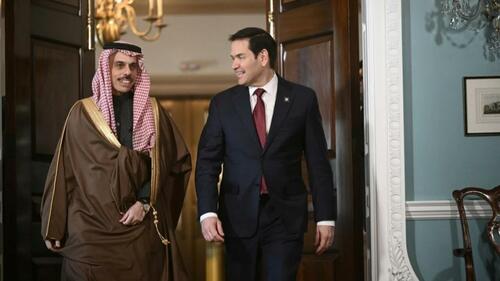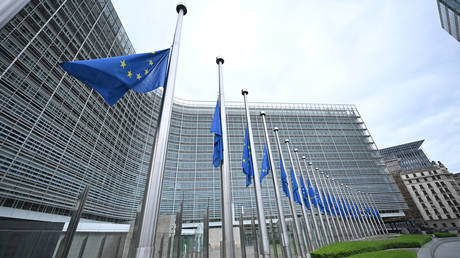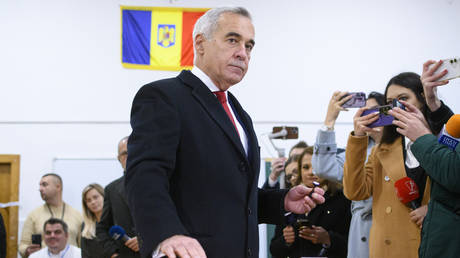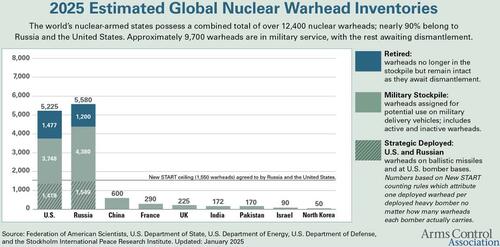In proclaiming the faith and in administering the sacraments every priest speaks on behalf of Jesus Christ, for Jesus Christ.
Distinction Matter - Subscribed Feeds
-
Site: Catholic Herald
There is an odd but prevalent fascination with the Catholic Church’s claim to miraculous divine intervention.
The dogma of papal infallibility is not well understood, even among some Catholics. There are many people, including Catholics, who seem neither to understand it nor believe it when it is explained to them.
But it fascinates people. The combination of a claim to supernatural intervention and the level of reliance on that intervention provokes strong interest and reaction—particularly when it is misunderstood; perhaps especially so.
And so, when it comes to the Conclave, there is an implicit assumption that if the Pope can be infallible (in whatever way that is claimed), then surely the election of the Pope must be equally infallible?
If one understands the dogma of infallibility in the simple and restricted way that the Church actually teaches it, then of course this does not follow.
But it might be thought to follow, or people might want it to follow. And so the question emerges: “Surely the Holy Spirit chooses the next pope?”
At the lowest level of expectation, if the papacy is so important, and if the office is so central to the health and life of the Church, it is the very least people might hope or expect.
One helpful source in examining this expectation is the late Pope Benedict XVI.
While still Cardinal Ratzinger, he was asked by Bavarian television in 1997 exactly that question:
“Is the Holy Spirit responsible for the election of a pope?”
His reply might surprise some:
“I would not say so, in the sense that the Holy Spirit picks out the Pope… I would say that the Spirit does not exactly take control of the affair, but rather, like a good educator, as it were, leaves us much space, much freedom, without entirely abandoning us. Thus the Spirit’s role should be understood in a much more elastic sense—not that he dictates the candidate for whom one must vote. Probably the only assurance he offers is that the thing cannot be totally ruined… There are too many contrary instances of popes the Holy Spirit obviously would not have picked!”
The most helpful word in this explanation may be “control.” Prayer and magic are often confused. There is a natural human attraction to magic, in part because its central idea is control. In a world filled with uncertainty, control becomes a deeply attractive idea. There are things we want to be protected from, and things we want to happen. It is all too easy to confuse prayer with magic. But prayer is not about control—it is the opposite. It is an act of surrender. It requires the surrender of our own will and the invocation of “Thy kingdom come, thy will be done.”
In his description of the dynamics of prayer, Pope Benedict uses the analogy of a good educator. The educator offers to teach, show, provide insight and wisdom. But, just as you can lead a horse to water but cannot make it drink, so the Holy Spirit offers himself to the Church—but with preconditions. The first is that one prays. Prayer in practice is much harder than talking about it. It involves the sacrifice of time, the surrender of will, an abandonment of control, and the preferring of the slow, still, small voice. It also involves triangulation with the prayers of others.
In the highly politicised atmosphere of a papal election—when so much energy is spent on canvassing, persuading, negotiating, dissembling and organising—any act of surrender runs counter to the fast-flowing tide of energy harnessed for the vote.
Discerning the will of God is not easy. We pray “Thy will be done” several times each day, but it never becomes easier to engage in the effort of discernment—of telling the difference between my will and Thy will.
Benedict’s notion of elasticity is wise and compelling. It combines the light touch of love with the firm grip of connection. God will never let us go, never abandon us—but nor will He control us if we choose to wander. Benedict reassures us that God will not allow the Church to be utterly ruined. But He will allow us the scope to spoil it by our own wilfulness if we insist. How else do we explain the existence of some very poor popes who did great damage to the Church? How else do we explain the schism of Avignon?
As St Paul reminds us, where sin abounds, grace abounds all the more. It is the nature of God’s rescue mission that He can take the mess we make and reconfigure it into material for renewal, forgiveness and hope.
The Holy Spirit will whisper His preference into the ears of the cardinals as they sleep, eat, walk and pray. But just as the Children of Israel, having grown weary of prophets, demanded a king to imitate the nations around them, so too will God lengthen the elastic if the Church insists on imposing its own preferences over His invitation.
Christ’s promise to Peter was that evil would not prevail against His Church. Not that it could not spoil, corrupt, confuse or disturb. But history shows that whenever the Church slips into corruption, God raises up saints and renews it afresh.
And the prayers of 1.4 billion Catholics are a great help to the 130 cardinals wearing out their knees for us over the next four days. Orémus.
Photo: Pilgrims and tourists view a statue of Pope Pius IX inside the Basilica di Santa Maria Maggiore which Pope Francis has visited the fifth-century papal basilica over 100 times, where he prays in front of the icon of ‘Maria Salus Populi Romani’.(Photo by Christopher Furlong/Getty Images)

The post Does the Holy Spirit choose the Pope? Pope Benedict’s surprising answer first appeared on Catholic Herald.
The post Does the Holy Spirit choose the Pope? Pope Benedict’s surprising answer appeared first on Catholic Herald.
-
Site: Catholic Herald
The bells of Rome have tolled. The See of Peter stands empty once more. With the death of Pope Francis, who reigned from 2013 to 2025, the Church finds herself again poised between grief and expectancy, with a conclave looming beneath the frescoed gaze of Michelangelo.
Smoke shall rise soon from the Sistine chimney, but before it turns white, the faithful must reckon with a subtler, deeper matter: how should a Catholic pray in this hour?
Not just for whom, but how.
For many, this question already surfaced in the final months of Pope Francis’ illness. Some, while more than willing to pray for his good, were unsure whether praying for his recovery was good for the Church. What were the lips of the faithful to ask of God in such a scenario?
Now, in the shadow of his passing, their prayers take sharper shape: a longing for clarity, a clamouring hope among many for Cardinal Sarah, a growing chorus joining Cardinal Burke’s novena for the conclave. But what does it mean to petition heaven with such specificity? Is it holy boldness – or dangerous presumption?
This is no idle question of piety for those inclined toward ecclesiastical sport. It is a spiritual question. It confronts the Catholic soul with a fundamental dilemma: when some feel a pontificate has confounded or wounded the Church, are they still to pray for its extension? Are we allowed to pray for specific outcomes at conclaves – and to avoid others? May we beg God for deliverance? Or must we content ourselves with a simple genuflection to providence, whispering only, fiat voluntas tua, while our hearts seethe with silence or grief?
These are questions now on many minds – relevant to all, yet particularly to those faithful who walked beside the figure of Pope Francis with more sorrow than solace.
The weight of a pontificate
For many, Francis will be remembered as the Pope of the peripheries – the smiling shepherd who disdained baroque flattery and reached out to the excluded. He was accessible, unpretentious, and, for millions, a healing presence. His mantra – todos, todos, todos – resonated with those long alienated by legalism or abstraction. He witnessed smelled, as they said, of his sheep.
But for others, his legacy remains difficult. The early mishandling of the McCarrick scandal and the Vatican’s response to grave allegations against Fr. Marko Rupnik cast long shadows. The lifting of Rupnik’s excommunication, and delayed restrictions, deepened the pain among victims of abuse who had hoped this reforming Pope would mark a new beginning.
Then there are the traditionalists: faithful Catholics who find spiritual nourishment in the Church’s ancient liturgy. Their advocates in the Curia – Cardinals Raymond Burke, Gerhard Müller and Robert Sarah – were quietly dismissed. For many, this felt less like reform than repudiation. Flourishing Catholic communities often found themselves under scrutiny rather than being supported. Harsh words, censure and even expulsions replaced pastoral encouragement.
The paradox was painful: a Church struggling to fill seminaries, led by a pope who seemed to often clamp down on, and make life harder for the faithful in, the very enclaves where vocations were growing.
Petition and the shape of hope
So again: how do we pray?
Are we permitted to ask for a specific man, a particular kind of pope? Is it factional to desire someone like Cardinal Sarah: a man of deep prayer, doctrinal clarity and liturgical reverence? And what of Cardinal Burke’s global novena? Is it boldness, or overstep?
Scripture does not leave us paralysed. Abraham bargained with God. Moses pleaded. The Syrophoenician woman was dismissed – then returned. Even Our Lord, trembling in Gethsemane, first prayed, “Let this cup pass.” Only then did He whisper the holiest words of all: “Yet not My will, but Thine be done.”
In other words, to pray for a specific outcome is not to be unspiritual. It is human. Scriptural. And when done in charity and submission, it is holy.
It’s wise to pray that the conclave elects a man of integrity and orthodoxy, a man who can speak clearly in today’s Babel of moral confusion, who can bind up wounds and re-establish confidence in the Church’s voice. The desire for Cardinal Sarah’s election, or another of similar stature, is not unseemly. It is, for many, profoundly reasonable.
And Cardinal Burke’s novena, now drawing thousands across the globe, is not factionalism. It is fidelity – an expression of sorrowful hope by those who love the Church and long to see the papacy filled by a man after God’s heart.
The Petrine office, not the man
What about acting popes? How are we to treat and pray for them?
When crowds gathered on Saint Peter’s Square in Rome from 24 February this year to pray the rosary for the Pope’s health – finishing with a beautiful sung Salve Regina in the Church’s historical universal tongue – were Catholics obliged to pray for his longevity?
Some are legitimately hesitant to voice any criticism of the late Pope. They rightly understand he was their spiritual father. After all, it’s not the behaviour of a good son to liberally parade the faults of their father around without delicacy, reserve, discretion or charity.
And yet, a father may have faults. Sometimes they are manifest. This does not nullify the need for discretion, but it allows space for honest acknowledgment.
It’s tempting in a polarised age to turn the papacy into a personality cult – whether of loyalty or loathing. But the Church does not venerate popes for their charm or ideology. We honour Peter because Christ chose him, not because he always lives up to the call.
Pope John XII is remembered as having turned the Lateran Palace into a brothel; Sixtus IV gave his encouragement to a (half-successful) plan to murder multiple political opponents in cold blood during Mass; Honorius I even made a statement later magisterially corrected and condemned as heretical. They did not nullify the papacy.
And to acknowledge the harm of Traditionis Custodes or the confusion caused by Fiducia Supplicans is not disloyalty – it is fidelity. Fidelity of the kind shown by Paul when he rebuked Peter, Catherine of Siena when she chastised Gregory XI, or Benedict lived towards a Church in ruins.
True fidelity is never venomous. But neither is it silent.
Being mindful of Saint Paul’s injunction “bless, and do not curse”, Catholics are not obliged to pray that a particular pontificate last indefinitely.
And yet there is a higher form of prayer. One which should always, ultimately, supersede.
The wisdom of Gethsemane
A fruitful answer to these contentions is found in an anecdote I was once given at university by a young Spanish cradle Catholic. When discussing times in our lives we had found prayer to be not only a source of comfort but directly efficacious, she shared with me a deeply personal story. It has stayed with me ever since.
This lady (let us call her Emilia) continued the habit of daily prayer taught to her by her parents. As a teen, she would pray daily for the intention of a young, terminally ill student, a few years younger than her and whom she pitied.
One day, after a severe episode, he was rushed to hospital. Emilia prayed desperately, and to everyone’s surprise, he pulled through.
But seeing his continual severe agony, Emilia discussed her prayers with her priest. Were her prayers keeping him alive? Was she being naïve? Should she feel guilt for his suffering?
Her priest advised her to change her prayer – not to pray only for survival, but for abandonment to God’s will. To pray for the deliverance of this individual’s soul, but also for the Lord’s will to be done.
It took her weeks to embrace this. But the night she changed her prayer, she learned the boy had died the next morning.
This is not to suggest that her earlier prayers were wrong. But there is a time for petition, and there is a time for Gethsemane.
Her story offers no easy lesson. But it teaches the necessity of abandonment to God’s will. The Church teaches that God has both an active will – which desires truth, beauty, holiness – and a permissive will, which allows suffering, even papal misgovernance, for a greater good. This mystery is writ large in history: wicked popes, schisms, confusion – permitted, but never beyond God’s sovereignty.
Praying with a clean heart
So how should we pray now?
First, we must pray for the soul of Pope Francis. That is an immediate duty of charity. However one views his papacy, we commend him to God’s mercy and Our Lady’s intercession.
Second, we pray for the cardinals. That in the Sistine Chapel, under the aegis of the Last Judgment, they will tremble, listen, and obey the Holy Spirit – not their ambitions, not the trends of the age.
But this must be wrapped in abandonment to providence. God sees the whole; we see in part.
If we do not get the outcome we desire, we must obstinately refuse despair. God is a loving Father. He will deliver Israel. Faithful, devoted priests are already coming from the seminaries as we speak. Observers have commented that it is only a matter of time before they inherit and amend the Church. But this will happen on God’s timeline, not ours.
Third, we may pray with clarity and boldness for the next pope. It is not wrong to desire a man of deep holiness, doctrinal fidelity and liturgical reverence. And yes – we may pray for a particular man. We may ask that Cardinal Sarah, or one like him, ascend to the Throne of Peter. We are not disqualified from grace by our hopes.
But our final and ultimate prayer must be Christ’s.
Not clenched. Not bitter. Not partisan. But open-handed, pierced-hearted.
Fiat voluntas tua.
RELATED: Cardinal Müller warns Church risks split if ‘orthodox’ pope not chosen
Photo: Gianni Crea, key keeper of the Vatican Museums, shows the key that opens the door to the Sistine Chapel, Vatican, 13 February 2024. (Photo by TIZIANA FABI/AFP via Getty Images.)

The post From Pope Francis to conclave: How should a conflicted Catholic pray for the papacy? first appeared on Catholic Herald.
The post From Pope Francis to conclave: How should a conflicted Catholic pray for the papacy? appeared first on Catholic Herald.
-
Site: Zero HedgeWhite House: Changing A Minor's Gender Is "Child Abuse" And "Medical Malpractice"Tyler Durden Sun, 05/04/2025 - 09:20
Authored by Steve Watson via Modernity.news,
White House Deputy Chief of Staff Stephen Miller announced Thursday that the Trump administration considers it “child abuse” to be change the gender of a minor and that health professionals carrying out the procedures are opening themselves up to charges of medical malpractice.
Speaking to the press, Miller stated “The Department of Justice is coordinating with state and local law enforcement to fight child abuse in our school systems.”
“It is child abuse to change a child’s gender, particularly if you do not inform the parents,” Miller further emphasised, adding “So, if a five-year-old or a six-year-old or a seven-year-old goes to school and the teacher tries to turn the boy into a girl or the girl into a boy, that is child abuse, and this administration is treating that as child abuse, and it is a gross violation of parental rights.”
Stephen Miller (@StephenM): "It is child abuse to change a change a child's gender, particularly if you do not inform the parents."
— CSPAN (@cspan) May 1, 2025
Also: "Children will be taught to love America. Children will be taught to be patriots. Children will be taught civic values..." pic.twitter.com/tC8hIMT3Q7“This also includes the administration’s message to our hospital systems that they cannot and will not be allowed to use taxpayer dollars to perform chemical castrations and sexual mutilations of children,” Miller noted.
He added that “Castration surgeries, castration drugs, sterilization treatments of children are barbaric. They violate all sound medical ethics. They are completely unwarranted. They harm children for life, irreversibly. It is child torture. It is child abuse. It is medical malpractice.”
Democrats and feminists used to protest female genital mutilation in Islamic culture.
— EdelAxelsen (@OlaussenEdel) May 1, 2025
Now they celebrate it, encourage it by confusing children, and fund it. Even worse than FGM, the children are rendered sterile and completely a-sexual for the remainder of their lives.“So the Department of Health and Human Services, under the leadership of Bobby Kennedy, as well as the Department of Justice and other departments of this government, are making clear to our medical providers and our hospital systems that you cannot use taxpayer dollars to perform these barbaric procedures on America’s children,” Miller urged.
He further outlined that “HHS has systematically updated all and eliminated all of the junk, fake science that was produced under the Biden administration promoting sex changes on children, promoting the idea of sterilizing children.”
Democrats love mutilating the genitals of children and feeding them castration drugs. Sick people.
— Bongo (@GeorgeFrogger) May 1, 2025
Below are examples from the United States where a child's gender identity was changed or socially transitioned at school without one or both parents being informed, based on…“That’s been cleaned out, that’s been removed, and new guidance is being issued to doctors and hospitals advising them that they cannot perform these horrifying procedures, these irreversible procedures, on our nation’s children,” he added.
Leftists in the comments of the post are claiming en mass that there are no cases of this happening anywhere in the US, and that Miller is making it all up. Yet, there have been accounts in the news, and a deep dive suggests this is happening in places.
Miller also noted that “This administration ended the Biden administration’s policy and the Democrat Party’s policy of allowing men into women’s sports, men into women’s spaces.”
“We are using every single legal and financial tool we have, at President Trump’s direction, to make it clear that schools and universities are—and will—lose federal funds, as you’ve seen in Maine, if you allow men to invade women’s sports and women’s spaces. And this applies to our whole K-12 system,” Miller added.
* * *
Your support is crucial in helping us defeat mass censorship. Please consider donating via Locals or check out our unique merch. Follow us on X @ModernityNews.
-
Site: RT - News
Recruiters in the city of Lutsk violently detained a deliveryman, according to a clip on social media
Elon Musk has drawn attention to a viral video showing Ukrainian military recruiters forcibly detaining a deliveryman in Lutsk, in the western part of the country. Kiev has pursued a violent mobilization campaign for months, often resulting in clashes between reluctant civilians and military personnel.
On Saturday, a media user on X shared a video showing three Ukrainian soldiers approaching a man on a bicycle carrying a large yellow bag and wearing a vest, who appears to be a delivery worker.
After a brief conversation, the soldiers attempt to drag him into a white van parked nearby, but he resists. Following a struggle, the recruitment officers manage to shove the man into the vehicle, which then drives off. The fate of the detainee is unknown.
Reacting to the video, Musk posted “!!” on his social media platform. The X owner and close ally of US President Donald Trump has repeatedly called on the Ukrainian leadership to sign a ceasefire with Russia to avoid further casualties. Last November, he also criticized reported calls by the US government for Ukraine to lower the minimum conscription age to 18, writing: “How many more need to die?”
On Friday, another mobilization video from Lutsk surfaced on social media, with recruitment officers – potentially driving the same van as in the first clip – forcibly detaining a man riding a scooter.
Ukraine announced a general mobilization following the escalation of the conflict with Russia in 2022, barring most men 18 to 60 years old from leaving the country. In 2024, faced with manpower shortages and mounting losses, Kiev lowered the conscription age from 27 to 25, while introducing stricter penalties for draft evasion and tightening other mobilization rules.
READ MORE: Ukraine won’t win – Vance
As the mobilization drive continues, numerous videos have emerged on social media showing Ukrainian officials trying to forcibly recruit reluctant civilians, often leading to violent clashes.
-
Site: Fr. Z's BlogToo many people today are without good, strong preaching, to the detriment of all. Share the good stuff. It is the 3rd Sunday of Easter in the Novus Ordo and the 2nd Sunday after Easter in the Vetus Ordo. It … Read More →
-
Site: OnePeterFive

A few minutes by foot from where I presently write in Rome is the Basilica of St. Peter on the Vatican Hill. This was the traditional Roman Station for this Sunday in ancient times. The present church replaced the original built by the Emperor Constatine in the 4th century. It soars with its vast vaults and dome over the originally humble grave of the first Vicar of Christ, the Pastor Ovium…
-
Site: Zero HedgeSaudi Arabia Executes 100th Prisoner So Far This Year - Majority Are For Drug OffensesTyler Durden Sun, 05/04/2025 - 08:10
Saudi Arabia has executed two people on terrorism-related charges, bringing the total number of executions in the kingdom this year to at least 100, according to an AFP tally.
The Ministry of Interior said the two Saudis were executed for their involvement in acts of "terrorism", including joining a "terrorist organization" and attending training camps abroad, where they learned to make explosives.
 Leaked video/screenshot shows execution in Saudi Arabia, YouTube
Leaked video/screenshot shows execution in Saudi Arabia, YouTube
"After being referred to the competent court, a decision was issued confirming the charges against them and ordering their execution as punishment," it added.
Of the 100 people executed this year, 59 were convicted of drug-related offences, including 43 foreigners, according to AFP.
"While Saudi Arabia positions itself as a positive diplomatic actor, its international partners are showing they are willing to turn a blind eye to its flagrant human rights violations," Jeed Basyouni of the rights group Reprieve US said in a statement.
"The result? 100+ executions since January, more than half of them for non-lethal drug offenses."
After a moratorium of approximately three years, Saudi authorities resumed executions for drug-related crimes at the end of 2022.
According to a previous AFP tally, at least 338 people were executed last year, compared to 170 in 2023 - far higher than the previous record of 196 in 2022.
Saudi human rights defenders and lawyers have accused Crown Prince Mohammed bin Salman of overseeing a crackdown on freedom of expression since he came to power.
This includes the introduction of a counterterrorism law that Human Rights Watch has criticized for its broad definition of terrorism.
 US Secretary of State Marco Rubio meets with Saudi FM Prince Faisal bin Farhan at the State Department in Washington, on April 9, 2025. AFP
US Secretary of State Marco Rubio meets with Saudi FM Prince Faisal bin Farhan at the State Department in Washington, on April 9, 2025. AFP
At least 1,115 executions have been carried out under the crown prince's rule between June 21, 2017 and October 9, 2024.
Additionally, according to Reprieve, Saudi Arabia has repeatedly lied to the UN about its use of the death penalty.
-
Site: AsiaNews.itAs the Prefect of the Dicastery for the Clergy, Cardinal Lazzaro You Heung-sik holds one of the most influential roles in the Roman Curia. His life journey—from a war-torn Korea to the corridors of the Vatican—offers insight into the values, complexities, and vision shaping today's Asian Catholic leadership.
-
Site: AsiaNews.itArchbishop of Jakarta since 2010, now approaching 75, he welcomed Pope Francis to the country on his trip a few months ago.Among the initiatives he has promoted is a diocesan fund that supports the sick and bereaved families: 'Concrete moments in which to show ourselves to be brothers and sisters to all.'
-
Site: Novus Motus LiturgicusDearest brethren, Christ suffered for us, leaving you an example that you should follow His steps; Who did no sin, neither was guile found in His mouth; Who, when He was reviled, did not revile. When He suffered, he threatened not, but delivered Himself to him that judged Him unjustly; Who His own self bore our sins in His body upon the tree: that we, being dead to sins, should live to justice: Gregory DiPippohttp://www.blogger.com/profile/13295638279418781125noreply@blogger.com0
-
Site: southern orders
-
Site: PaulCraigRoberts.org
Karen Kwiatkowski Wonders How Much Longer Americans Will
Be Content for 9 Million Israelis to Totally Dominate the UShttps://www.lewrockwell.com/2025/05/karen-kwiatkowski/war-in-washington/
-
Site: PaulCraigRoberts.org
This is US Representatie Marjorie Taylor Greene: the Firebrand Republican Member of the house:
https://x.com/RepMTG/status/1918351681374581181
She says Trump is losing support.
It does seem that Trump’s peace promises have been elbowed off the agenda by Israel and the US armaments industry.
Washington has approved a $310 million F-16 support package for Ukraine, and Trump threatens more sanctions for Russia. https://www.rt.com/news/616689-us-approves-f16-support-ukraine/ It appears that the deal Trump wants does not coincide with the one Zelensky wants or the one that Putin wants. Will coercion take the place of negotiation?
The peace negotiations with Iran seem even less favorable. The terms specified by the US Secretary of State are unacceptable to Iran, and Washington has returned to war threats.
The analysis below is from a realist, not a narrative supporter, and it is grim. Make of it what you will:
Following the last (third) meeting between the US and Iran held a week ago, a “senior US official” reported that “The talks in Muscat were positive and productive. There is still much to do, but further progress was made on getting to a deal.” The Omani Foreign Minister also stated, “U.S-Iran talks today identified a shared aspiration to reach agreement based on mutual respect and enduring commitments. Core principles, objectives and technical concerns were all addressed.” My impression was that the talks were focusing on the same principles that the previous JPCOA agreement (which Trump abrogated) had embodied, which would have resulted in Iran forgoing the production of weapons-grade uranium (and the elimination of Iran’s current stockpile of 60% enriched uranium).
Statements made on May 2 by US Secretary of State Marco Rubio (copied below) reveal that, once again, the negotiating position of the US on Iran appears to have radically changed. The US has reinstated the Zionist list of demands that go far beyond limiting the production of weapons-grade uranium: Iran must (1) eliminate all capacity to enrich uranium (which it is allowed to do under the Nuclear Non-Proliferation Treaty, for uses in its civilian nuclear energy program), (2), eliminate its arsenal of long-range ballistic missiles (which are essential for Iran’s defense against Israel et al), and (3) stop all support of the Houthis in Yemen.
Rubi’s comments came as the fourth round of nuclear negotiations between Tehran and Washington, set to take place in Rome today (May 3), were postponed indefinitely. An Iranian official cited by Reuters said a new date for the talks would be set “depending on the US approach.” Iran has been quite clear that its uranium enrichment and its defense capabilities are non-negotiable. In other words, the latest US demands — which have resulted in the cancellation of further talks with Iran — are designed to be unacceptable and create the excuse to launch major attacks on Iranian nuclear and military facilities.
When he took office, Trump had the opportunity to immediately stop the flow of munitions, arms, and money to both Israel and Ukraine, which would have quickly ended the ability of both nations to continue supplying their respective armed forces, bringing a relatively quick end to the Ukraine War and the ethnic cleansing in Gaza. But Trump quickly abandoned his campaign promises to avoid entangling the US in any more foreign wars, which for decades have wasted trillions of dollars that could have been used to rebuild the US crumbling infrastructure and de-industrialized economy.
Trump instead accepted the Zionist neocon demands that the US continue its unconditional support of the ongoing Israeli slaughter and starvation of the Palestinians, and as a result, he has started a new war with Yemen, because — in defense of the Palestinians — the Yemeni Houthis dared to blockade all ship traffic going to and from Israel in the Red Sea. Under Trump, the US “Operation Rough Rider Protect Genocide” has carried out 1000 bombing raids against Yemen, which have killed hundreds of Yemeni civilians but have failed to break the blockade.
Considering the abject failure of the current military attacks on the Houthis, it makes absolutely no military sense for the US to launch a similar air campaign against Iran — a nation like Yemen that has spent decades preparing for just such an attack. Iran has a multitude of deeply buried missile cities, which include underground military bases and silos where Iran stores and deploys its missile arsenal. These missile cities are strategically located throughout Iran, and they include large, deeply buried underground tunnels, storage facilities, and launch silos for missiles. The US and Israel may know the location of many of these sites (especially the nuclear sites), but they cannot use conventional weapons to effectively destroy them.
Only an attack with nuclear weapons has the capacity to thoroughly destroy nuclear facilities that are buried deep inside a mountain or underground (this would not assure the destruction of the 60% enriched uranium supplies that Iran has already produced, as it may have already been moved elsewhere). The US is highly unlikely to attack Iran with nuclear weapons.
But would the current Israeli leadership shy away from using nuclear weapons against the Iranian nuclear facilities? Israel has already had no qualms about killing hundreds of thousands of Palestinians. Israel has several hundred nuclear weapons that can be “delivered” by planes, ballistic missiles, and cruise missiles — including submarine-launched cruise missiles carried by their 4 German diesel subs. An Israeli nuclear strike against Iran would trigger a full-scale Iranian attack on Israel, and all-out war would ensue.
Even if a US-Israeli attack on Iran was initially limited to the use of conventional non-nuclear weapons, there has been public discussion that such an attack would target Iranian political and military leaders. This type of attack would involve hitting Iranian cities as well as Iranian military bases. It would be a huge strike, and one that would almost guarantee that Iran would retaliate against US bases in the Middle East, US naval forces that participated in the attack — as well as against Israeli military bases, military leaders, and Israeli political leaders. The three largest cities of Israel (Jerusalem, Tel Aviv, and Haifa, which hold at least 20% of the total population of Israel) would be struck. After such an attack, I think Israel would retaliate with nuclear weapons against both civilian and military targets in Iran.
In other words, regardless of whether or not the initial strike on Iran would include nuclear weapons, it is almost inevitable that nuclear weapons would be used in the war that would result.
The Israeli propaganda is that Iranian air defenses have already been destroyed, making a large air attack against Iran quite feasible (a “cakewalk”). I think this is a false assumption, created by Israel to help draw the Americans into a joint attack. The idea is that once the air defenses are completely taken out, and the Iranian political and military leaders have been killed, the scenario recently seen in Syria (with the utter collapse of the Assad government) will play out again, this time in Iran. The incredible hubris of the Trump White House seems to lend itself to accepting this idea. The latest change in the US “negotiating” position via Iran suggests that Trump will succumb to the Zionist pressure to wage war against Iran.
If the reports from Alastair Crooke are correct, the Russian and Iranian air defense systems are in good working order and actually fended off the last attempt by Israel to take them out (in October 2024). If this is the case, I think the US and Israeli forces will suffer major losses if they send their air forces to attack Iran military and nuclear sites. Russia will be providing real-time intelligence to Iran; the Russian air base in Tartus, Syria, has S-400 radar systems that can detect an Israeli attack; Iran also has an over-the-horizon radar system that could provide an early warning of an aerial attack. Will the US be able to effectively pierce Russian and Iranian air defense systems? If not, then I suspect that under such circumstances, as the desperation levels of the attackers increase, the use of nuclear weapons becomes even more likely.
Let us hope that the reports copied below — in which the US Secretary of State Rubio has announced the latest US demands on Iran — are simply one more flip flop in Trump’s bizarre manner of threatening extreme action against any nation that doesn’t follow his latest diktats. If not, then all Hell is going to break loose in the Middle East sometime in the near future.
Rubio says Iran must abandon its uranium enrichment program
By Vaughn Cockayne – The Washington Times – Friday, May 2, 2025
A version of this story appeared in the daily Threat Status newsletter from The Washington Times. Click here to receive Threat Status delivered directly to your inbox each weekday.
Secretary of State Marco Rubio said Iran must “walk away” from all nuclear enrichment and ballistic missile programs, taking a public hard line as negotiations between Washington and Tehran continue.
In an interview with Fox News on Thursday, Mr. Rubio said there can be no long-lasting deal between the U.S and Iran if Tehran is unwilling to give up several initiatives.
“They have to walk away from sponsoring terrorists, they have to walk away from helping the Houthis, they have to walk away from building long-range missiles that have no purpose to exist other than having nuclear weapons, and they have to walk away from enrichment,” Mr. Rubio said Thursday
Mr. Rubio went on to suggest that Iran could import enriched uranium, so it would not have to abandon its domestic commercial nuclear industry completely. He added that the U.S. must be allowed to inspect Iranian nuclear and military facilities regularly.
Iran has long maintained that its nuclear enrichment program is for civilian and commercial use and has denied seeking a nuclear weapon. Its foreign ministers have asserted repeatedly that it will not give up its nuclear sovereignty during negotiations.
Nuclear watchdogs and U.S. officials say Iran’s level of nuclear enrichment is far higher than what would be necessary for purely civilian purposes. During the past month’s talks, some have floated the possibility of Iran transferring ownership of its enriched uranium to a foreign ally like Russia. Iran’s foreign ministry has publicly declined to accept such an offer.
“If you have the ability to enrich at 3.67%, it only takes a few weeks to get to 20%, then 60% and then the 80 and 90% that you need for a weapon,” Mr. Rubio said Thursday.
Mr. Rubio’s comments on Thursday detail the deep divisions still in play during negotiations. The U.S. seeks limits on Iran’s nuclear enrichment and ballistic missile program in exchange for sanctions relief.
However, President Trump has repeatedly said that if Tehran and Washington are unable to come to a deal, he would launch bombing raids on Iran with Israel’s help. Secretary of Defense Pete Hegseth issued a firm warning to Iran on Thursday, urging the Islamic Republic to halt its funding of Houthi rebels in Yemen.
Negotiators were expected to meet again in Rome on Saturday, but Omani mediators announced Thursday that talks had been postponed over logistical issues.
Iran must ‘walk away’ from all uranium enrichment, Rubio says
https://www.reuters.com/world/iran-must-walk-away-all-uranium-enrichment-rubio-says-2025-05-02/
May 2 (Reuters) – Iran has to ‘walk away’ from uranium enrichment and long-range missile development and it should allow Americans to inspect its facilities, U.S. Secretary of State Marco Rubio said on Thursday as a round of nuclear talks was postponed.
Rubio’s comments underscore the major remaining divisions in talks between the countries to resolve the long-running dispute over Iran’s nuclear programme, with U.S. President Donald Trump threatening to bomb Iran if there is no agreement.
“They have to walk away from sponsoring terrorists, they have to walk away from helping the Houthis (in Yemen), they have to walk away from building long-range missiles that have no purpose to exist other than having nuclear weapons, and they have to walk away from enrichment,” Rubio said in an interview on the Hannity programme on Fox News. Iran has repeatedly said it will not give up its missile programme or its uranium enrichment – a process used to make fuel for nuclear power plants but which can also yield material for an atomic warhead.
On Thursday a senior Iranian official told Reuters that the scheduled fourth round of talks due to take place in Rome on Saturday had been postponed and that a new date would be set “depending on the U.S. approach”.
-
Site: Zero HedgeHope For The UK? Reform Party Dominates Uniparty In Sweeping Local ElectionsTyler Durden Sun, 05/04/2025 - 07:35
In July of 2024, the Labour Party and Kier Starmer won general elections with the British public seeking to punish conservatives for not following through on their Brexit promises and stopping mass open immigration. One of the primary reasons why the Brexit movement was a success was because it attempted to address growing concerns among UK natives that their ties to the European Union had trapped them in a prison of progressive politics including carbon taxation, declining personal freedom, economic crisis and mass immigration from the third world.
Starmer would take his narrow win and go on to expand the very same policies that UK citizens voted against. He helped to flood Britain with migrants, primarily from Islamic regions, and as the public took to the internet and the streets to complain, he enforced draconian censorship laws to silence them.
It's amazing how quickly things can change in less than a year. In 2024, the Reform Party won around 14% of the vote share. This week in local elections they won 30% of the vote share, crushing Labour and the Conservatives and winning 677 council seats.
Labour lost 187 seats and Conservatives were stunned with a 674 seat loss. Nigel Farage has hailed Reform UK's gains in Thursday's elections as "unprecedented" and "the end of two-party politics". The party also won two mayoral races and added a fifth MP to its ranks in the Runcorn.
UK voters are sending a clear message to the political elites that their progressive agenda will no longer be tolerated.
Local council elections are held every four years (though not all seats come up for a vote at the same time), and are designed to fill local government posts dealing with issues from housing to potholes. The Reform Party upset in council seats is a sign that Farage is on his way to becoming Prime Minister.
Conservatives and Labour, long considered a "Uniparty" alliance that never actually changes the system while they pretend to be opposed, has consistently referred to Reform as an "extremist" or "far-right" organization (much like MAGA in the US). Writing in The Times, Keir Starmer argued that the lesson learned from the elections was not that the country needed "ideological zealotry", but that the government needs to "crank up the pace on giving people the country they are crying out for..."
Labour members claim that their losses are due to the sluggish economy and cuts to social welfare policies, such as cuts in winter fuel payments to pensioners. In other words, their solution is to buy off voters with more benefits. They continue to pretend as if the mass immigration problem, high taxes and censorship are not factors.
Nigel Farage, though opposed to mass immigration programs, has not come out to fully endorse deportations, which is what helped give Donald Trump his landslide White House win in the US. Some critics say Farage does not go far enough in his solutions for saving the country. Only time will tell, but there are certainly visible cracks in the armor of the uniparty system and this may portend much needed changes in the UK and perhaps the rest of Europe in the near future.
-
Site: PaulCraigRoberts.org
The Bell Tolls for All White Gentile Ethnicities
Paul Craig Roberts
The Vice President and Secretary of State of the United States have called attention to the tyrannical behavior of the current German government, a corrupt anti-democratic government, controlled by Israel, that is holding on to power by designating its rival, AfD, the rapidly growing second largest party as “extremist.” Recent polls indicate that the AfD has pulled even and perhaps a bit ahead of the government that is trying to suppress it.
By applying the “extremist” label to its rival, the government gives itself the power to use its spy agencies to keep the AfD under surveillance. This permits the current corrupt government to know in advance the AfD’s electoral plans while demonizing the AfD as so extreme that it must remain under surveillance.
On what grounds is the AfD designated extremist? The German Domestic Security Service BfV explains: The AfD represents ethnic Germans. Representing “people based on ethnicity and descent” disregards the human dignity of immigrant-invaders and is “incompatible with the democratic basic order.” https://www.rt.com/news/616710-german-fm-response-rubio-afd-tyranny/
Here we have it stated clearly just as Jean Raspail put it in The Camp of the Saints. It is anti-democratic for a government to represent the citizens from whose ethnicity the name of the country is derived. Democracy requires representation of those who entered the country illegally or under false pretenses. All government enforcement measures are then directed against the ethnic citizens who are coerced to accept the invasion. As Jean Raspail showed, this is a formula for the extinction of white ethnicities. President Trump’s effort to restore power to ethnic Americans is being blocked by an anti-American judicial system that represents immigrant-invaders, not American citizens.
Hanne Herland of the Herland Report tells us accurately that this is the situation all over Western Europe, the UK and Ireland:
“In Europe, non-Western immigrants were given the victim card, and the current discrimination against the indigenous native Europeans by their own leaders began. Instead of listening to their needs, they demonized their views and attacked their own populations.
“Europeans were told to step aside and allow immigrants to behave however rudely they wanted, since they came from poor countries and ‘didn’t know any better.’ They were to be excused from law-breaking behavior such as violent rapes, murders or entering the country illegally.” In other words, the immigrant-invaders weren’t civilized sufficiently to know any better, and it is all the fault of racist white ethnicities. https://hannenabintuherland.com/currentaffairs/how-racism-against-whites-was-legitimized-by-marxist-multiculturalism/
What representing immigrant-invaders means in the EU is the loose enforcement, if any enforcement at all, of criminal and rape laws against immigrant-invaders,
Holding immigrant-invaders accountable would be racism, like what the Germans did to Jews. In effect, what is happening all over Europe and in Britain is that immigrant-invaders are becoming overlords over the ethnicities that comprise the former nations, now towers of babel.
So, on top of their Israeli overlord, Europeans have immigrant-invaders as another overload.
What a joke that Europeans and British and Irish are “free people.” They are the most enslaved in history. Even their tongues have been cut out. They cannot speak.
The entire Western World is a dead man walking. Every person who rises to the defense of Western civilization is demonized, arrested, fired, dismissed from his university, framed in a false prosecution and imprisoned.
The Insouciant West was insouciant for too long, It has lost its life.
-
Site: Vox Cantoris
-
Site: Mises InstituteWe eliminate the main problem that plagued "limited government.": we are relying on the government — a monopoly agency — to police itself.
-
Site: Zero HedgeFive Benefits That The US Would Reap From Coercing Ukraine Into More Concessions To RussiaTyler Durden Sun, 05/04/2025 - 07:00
Authored by Andrew Korybko via substack,
Failure to do so risks another “forever war”, an Afghan-like debacle for the US, or World War III.
Russian Foreign Minister Sergey Lavrov’s recent reaffirmation of his country’s goals in the Ukrainian Conflict signal that the Kremlin regards the US’ reportedly finalized peace plan as unacceptable. Ukraine must withdraw from the entirety of the disputed territories, at least partially demilitarize and denazify, and Western troops mustn’t deploy there afterwards for Russia to agree to a ceasefire.
Here are the five benefits that the US would reap from coercing Ukraine into these and other concessions to Russia:
1. Swiftly & Sustainably End The Ukrainian Conflict
Another “forever war” or Afghan-like debacle would be averted upon swiftly ending the conflict via these means, which would lead to a sustainable peace since Russia’s security interests would be ensured. The Trump Administration thus wouldn’t have to worry about getting dragged into another quagmire via mission creep if peace talks collapse or having its reputation tarnished by a defeat. Coercing Ukraine into the required compromises for ending the conflict would be an effective and face-saving way to move on.
2. Shock NATO Into Spending 5% Of GDP On Defense
NATO’s Western European members are expected to procrastinate on Trump’s demand that they spend 5% of GDP on defense unless they’re shocked by the proposed US-coerced Ukrainian concessions. They’d jolt them into prioritizing this without further delay due to their paranoid fear of a Russian invasion. This would in turn lead to Western Europe finally shouldering more burdens for its own security and correspondingly complementing its Central European members’ existing efforts in this regard.
3. Turn Central Europe Into The EU’s Center Of Gravity
In that scenario, the Central European countries’ role as NATO’s frontline states would be reinforced, which could lead to them becoming the EU’s center of gravity if the US helps the Polish-led “Three Seas Initiative” implement its dual military-economic integration projects. These anti-Russian countries are expected to cling even closer to the US after the Ukrainian Conflict ends, thus enabling the US to drive a wedge between Western Europe and Russia afterwards, thereby perpetuating US influence over the EU.
4. Enter Into A “No-Limits” Resource Partnership With Russia
Expanding the nascent Russian-US “New Détente” into a “no-limits” resource partnership in the post-conflict era would lead to them jointly managing the global oil and gas industries while also unlocking valuable rare earth opportunities. Potential US ownership of Russia’s Nord Stream and trans-Ukrainian gas pipelines to Europe could further perpetuate US influence over the bloc as well as deter Russia from violating the Ukrainian peace deal. The economic and strategic benefits would truly be unprecedented.
5. Accelerate The “Pivot (Back) To Asia” For Containing China
Quickly extricating the US from the financial and military commitments that the Ukrainian Conflict entails would accelerate its “Pivot (back) to Asia” for containing China and comprehensively add to the pressure being put upon the People’s Republic by Trump’s global trade war/“economic revolution”. This outcome would advance the US’ grand strategic goal of reshaping the emerging Multipolar World Order more to its liking within the realistic limits posed by the global systemic transition.
These five benefits would be lost if the US doesn’t soon coerce Ukraine into more concessions to Russia.
The conflict could continue indefinitely in that event, during which time the US might either largely abandon Ukraine and thus cede its influence over the EU while accepting an historic defeat or punish Russia by “escalating to de-escalate” at the risk of World War III, neither of which is preferable.
The best way to end what Trump rightly described as “Biden’s war” is therefore through the proposed means.
-
Site: Catholic Herald
Both geographically and historically, the region of Andalusia in Spain is a crossroads of humanity. Bordering both the Atlantic Ocean and the Mediterranean Sea, it’s physically part of Europe but for six centuries it was known as al-Andalus and formed a key outpost of the Islamic world.
It’s perhaps fitting that Andalusia therefore would give birth to a papal candidate who seems to unify three different worlds in his own biography: 72-year-old Cardinal Cristóbal López Romero, who currently serves as the Archbishop of Rabat in North Africa and who’s also spent considerable portions of his career in Paraguay and Bolivia.
It’s not, by the way, as if López is campaigning for the papacy; he recently quipped that if he sees any serious danger of that happening, he’ll start running from Rome and not stop until he hits Sicily. He also told a Spanish journalist that anyone desiring to be pope has problems, either of the head or the heart.
Whether he wants it or not, however, many people, including not a few of his fellow cardinals, can’t help looking at the bearded, jovial Salesian, who exudes an informal style coupled with a deep intelligence, and seeing a potential Successor of Peter.
 Spanish cardinal Cristóbal López Romero during a ceremony inside St Peter’s Basilica following the procession of the late Pope’s coffin from the chapel of Santa Marta to St Peter’s Basilica, Vatican, 23 April 2025. (Photo by TIZIANA FABI/AFP via Getty Images.)
Spanish cardinal Cristóbal López Romero during a ceremony inside St Peter’s Basilica following the procession of the late Pope’s coffin from the chapel of Santa Marta to St Peter’s Basilica, Vatican, 23 April 2025. (Photo by TIZIANA FABI/AFP via Getty Images.)López was just twelve years old when he decided to enter the Salesians of Don Bosco, the second-largest men’s religious order in the Catholic Church after the Jesuits, which is known for its doctrinal orthodoxy, its pastoral work with youth, and its commitment to schools. He professed his first vows at the age of 16 in 1968, during a period in Europe marked by student riots in which the idea of a religious vocation probably seemed a deeply counter-cultural act.
López was ordained to the priesthood in 1979 following studies at the diocesan seminary in Barcelona, and three years later he graduated with a degree in information science – with, let the record reflect, a specialisation in journalism – from the Autonomous University of Barcelona.
Not long afterwards, López began the missionary journeys that would form the heart of his priesthood and his episcopal service.
In 1984 he departed for Paraguay, where he would remain for the next 20 years. Initially he was responsible for pastoral service with young people in the capital city of Asunción, eventually becoming the Salesian provincial director for work with youth. After two years as a parish priest in Asunción, López was then elected superior of the Salesians in Paraguay, which would not be the last time his leadership abilities came to the fore.
After finishing his term as superior and serving in a few other capacities for the Salesians in Paraguay, López’s life took a significant turn when he was asked to relocate to Morocco, where he ran a centre of formation in the city of Kénitra from 2003 to 2011. That experience put him in the country during the initial stirrings of the 2011-2012 Moroccan protests, part of the broader Arab Spring, which eventually led to the King conceding a series of constitutional reforms allowing for democratic elections.
Unusually, López was asked to go back to Latin America in 2011 to take up the post of superior of the Salesian province in Bolivia. Usually leadership would be elected from the members of the order already in the country, but clearly there were challenges in Bolivia that the community judged an outsider, someone with deep experience and a reputation for good judgement, was needed to address.
After three years, López returned to Morocco to become superior of the Salesian community there, his third leadership position in the community. He held that post until 2017, when Pope Francis named him the Archbishop of Rabat, making him the leader of the small Catholic community – less than one per cent of the national population of 31 million – in the overwhelmingly Muslim nation.
In the post, López became a major proponent and architect of interfaith dialogue, especially Christian/Muslim relations. In March 2019, he hosted Pope Francis on a two-day visit to celebrate the 800th anniversary of the historic encounter between St. Francis of Assisi and Sultan al-Malik al-Kamil during the Fifth Crusade. The pontiff was obviously appreciative, naming López a cardinal in a consistory he staged later that year in October.
During his term in Rabat, López has also emerged as an important voice on behalf of migrants and refugees who often set out from North Africa in search of a better life in Europe. During the course of a 2020 summit on the Mediterranean region in Bari, Italy, López insisted that immigration is “not a problem, but the consequence of many problems”.
“Poverty, wars, famines and climate change, an economic system which, as Pope Francis says, crushes entire populations: These are the problems that give rise to the migratory phenomenon,” he said.
López then offered a personal touch.
“I suffer a lot when, in Spain, some people, after having participated in the Eucharistic celebration, ask me, in a spiteful tone, not to send any more migrants from Morocco,” he said. “I ask myself: how is it possible to go to Mass and feel almost no compassion for the men, women and children who are suffering?”
López took part in Pope Francis’s two Synods of Bishops on Synodality, endorsing in general terms the push for a more dialogic and participatory Church, but he steered clear of taking positions on any of the controversial questions in those summits, from the ordination of women deacons to the blessing of persons involved in same-sex unions.
The case for López Romero?
To begin with, he has global appeal. Latin Americans tend to see him as one of their own, but he also has strong relationships with many African bishops, who, among other things, appreciate his pastoral care of migrants from their countries who arrive in Morocco trying to cross the Mediterranean into Europe.
The fact of being Salesian is reassuring to some voters, who see it as a sort of Good Housekeeping Seal of Approval that he won’t rock the boat too much. In that sense, a vote for López could be seen as a choice for the social and cultural portions of the Pope Francis agenda, but without the more doctrinally adventurous elements.
Further, at a time when many cardinals believe it’s important the next pope be a strong governor, especially in terms of Vatican administration, the varied experience López brings in leadership positions is seen as an asset.
Finally, López Romero is one of those rare figures who just seems to radiate contentment and serenity, a pastor with a keen sense of humour and also a deep spiritual streak. If the lead item on the job description of a pope is to the Church’s Missionary-in-Chief, then López might well strike many as an attractive option.
The case against?
The lack of a clear record on intra-ecclesial disputes may hurt López in some quarters. A few cardinal electors may feel they took a spin on a Latin American with a somewhat ambiguous platform twelve years ago, and they’re not really in the humour to do it again, even if the candidate was technically born in Spain.
In addition, López Romero’s résumé may come off to some electors as compelling and impressive, but perhaps a little too singular. The challenges of being the chief shepherd of Rabat, after all, no doubt are daunting, but how much real relationship do they bear to the ordinary circumstances of Catholic life in most of the rest of the world?
It may be a small point, but it’s also worth noting that it’s been almost 325 years since the Catholic Church was last led by a bearded pope – Innocent XII, who reigned from 1691 to 1700. On the other hand, Innocent was a reformer, fighting the practice of nepotism in Church offices, so perhaps López would bring the same spirit into the office.
In any event, his thick beard is all white – perhaps a nice bit of color coordination with the vestments he could be wearing in just a matter of days, should the choice fall upon the Man from Morocco.
Photo: New cardinal, Spanish prelate Cristobal Lopez Romero, following his appointment by the Pope, during an Ordinary Public Consistory for the creation of new cardinals, Vatican, 5 October 2019. (Photo by TIZIANA FABI/AFP via Getty Images.)

The post Papabile of the Day: Cardinal Cristóbal López Romero, ‘the Man from Morocco’ first appeared on Catholic Herald.
The post Papabile of the Day: Cardinal Cristóbal López Romero, ‘the Man from Morocco’ appeared first on Catholic Herald.
-
Site: RT - News
The country’s president, who pledged to attend despite pressure from the EU, was recently hospitalized with a heart condition
Serbian President Aleksandar Vucic is expected to attend Russia’s Victory Day celebrations, despite a recent health scare, Finance Minister and Deputy PM Sinisa Mali has said.
The May 9 parade on Moscow’s Red Square will mark the 80th anniversary of the Soviet victory over Nazi Germany in World War II. The Kremlin has invited a number of leaders from countries including Serbia, Slovakia, China, India, and Brazil. EU officials have warned member and candidate states against attending.
On Friday, Vucic abruptly ended a trip to the US after experiencing chest pain during a meeting in Florida, reportedly caused by high blood pressure. He had planned to meet with the Serbian diaspora and US President Donald Trump, but returned to Belgrade and was admitted to the Military Medical Academy, according to local broadcaster RTS. Doctors said the president “cannot be expected to return to his regular activities for several days.”
Speaking on Saturday, Mali said Vucic will likely follow through with the visit. “One thing I can say is, knowing him, considering that he is a man of his word, he gave his word that he would be there, I assume that he will keep his word. But I cannot tell you that at this moment.” Vucic was discharged from the hospital on Saturday.
Read more EU admits blackmailing Serbian leader over Moscow visit
EU admits blackmailing Serbian leader over Moscow visit
The Military Medical Academy confirmed that the president underwent cardiovascular and hematological diagnostics and is now in stable condition. Doctors ordered him to rest, and he has canceled all activities and obligations for the next few days.
Among the EU leaders invited to the event were Hungarian Prime Minister Viktor Orban and his Slovak counterpart, Robert Fico. Hungary declined the invitation, stating that the end of World War II represented “a bitter defeat” due to the country’s alliance with Nazi Germany. Fico has confirmed his attendance.
During a meeting with Vucic last month, EC Commissioner for Enlargement Marta Kos reportedly cautioned that his attendance would be held against Serbia’s EU bid. Despite the pressure, Vucic said he had not changed his decision to attend the event, where a unit of the Serbian Armed Forces will also take part. Russian President Vladimir Putin praised those who accepted the invitation, calling them courageous for attending despite pressure from Brussels.
READ MORE: Serbian president cancels meetings in Washington – media
-
Site: RT - News
The previous vote was annulled on grounds of alleged “Russian interference,” with the leading candidate barred from running again
Romania is holding a rerun of its presidential election on Sunday after the previous vote was annulled on grounds of alleged Russian interference and electoral violations. Moscow has denied all claims of interference.
The annulled election in late November saw independent right-wing candidate Calin Georgescu, known for his NATO-sceptic stance, unexpectedly prevail in the first round with 23% of the vote. However, the Constitutional Court later invalidated the results, citing electoral “irregularities.” The country’s officials claimed that the candidate’s campaign had utilized undeclared funds, and that Russia was behind “hybrid” attacks, including in the cyber realm.
In March, Georgescu was barred by the Central Electoral Bureau from running again, citing his alleged “anti-democratic” and “extremist” stance as well as a failure to comply with electoral procedures.
Read more ‘Romania under tyranny’: How EU-sceptic Calin Georgescu was barred from new elections
‘Romania under tyranny’: How EU-sceptic Calin Georgescu was barred from new elections
In the current election, a total of 11 candidates are competing for the presidential post. The key contenders include George Simion, the leader of the far-right Alliance for the Union of Romanians (AUR), who is known for his opposition to the EU, and criticism of military support to Ukraine. He is leading the polls with approximately 30% support.
Other prominent candidates include Crin Antonescu, representing the governing Social-Democrat and National Liberal coalition, and Nicusor Dan, the mayor of Bucharest, both of whom support pro-EU agendas.
If no candidate wins an absolute majority, a run-off between the two leading candidates will be held on May 18.
Ahead of the rerun, meanwhile, Romanian detained RT journalist Chay Bowes, who had traveled to Bucharest from Dublin, Ireland, to cover the election. According to the reporter, he was presented with a paper – of which he was not given a copy – alleging that he was “a threat to the security of the state” and therefore should be deported. Bowes, a EU citizen, has insisted that he entered Romania “completely legally… to do [his] job.”
Commenting on the detention, Russian Foreign Ministry spokeswoman Maria Zakharova said that the Romanian election had turned into a “meme.” She added that “the situation around the election in Romania is so scandalous. It’s so dead-ended and it discredits the level of that pseudo democracy in Romania.”
-
Site: RT - News
The previous vote was annulled on grounds of alleged “Russian interference,” with the leading candidate barred from running again
Romania is holding a rerun of its presidential election on Sunday after the previous vote was annulled on grounds of alleged Russian interference and electoral violations. Moscow has denied all claims of interference.
The annulled election in late November saw independent right-wing candidate Calin Georgescu, known for his NATO-sceptic stance, unexpectedly prevail in the first round with 23% of the vote. However, the Constitutional Court later invalidated the results, citing electoral “irregularities.” The country’s officials claimed that the candidate’s campaign had utilized undeclared funds, and that Russia was behind “hybrid” attacks, including in the cyber realm.
In March, Georgescu was barred by the Central Electoral Bureau from running again, citing his alleged “anti-democratic” and “extremist” stance as well as a failure to comply with electoral procedures.
Read more ‘Romania under tyranny’: How EU-sceptic Calin Georgescu was barred from new elections
‘Romania under tyranny’: How EU-sceptic Calin Georgescu was barred from new elections
In the current election, a total of 11 candidates are competing for the presidential post. The key contenders include George Simion, the leader of the far-right Alliance for the Union of Romanians (AUR), who is known for his opposition to the EU, and criticism of military support to Ukraine. He is leading the polls with approximately 30% support.
Other prominent candidates include Crin Antonescu, representing the governing Social-Democrat and National Liberal coalition, and Nicusor Dan, the mayor of Bucharest, both of whom support pro-EU agendas.
If no candidate wins an absolute majority, a run-off between the two leading candidates will be held on May 18.
Ahead of the rerun, meanwhile, Romanian detained RT journalist Chay Bowes, who had traveled to Bucharest from Dublin, Ireland, to cover the election. According to the reporter, he was presented with a paper – of which he was not given a copy – alleging that he was “a threat to the security of the state” and therefore should be deported. Bowes, a EU citizen, has insisted that he entered Romania “completely legally… to do [his] job.”
Commenting on the detention, Russian Foreign Ministry spokeswoman Maria Zakharova said that the Romanian election had turned into a “meme.” She added that “the situation around the election in Romania is so scandalous. It’s so dead-ended and it discredits the level of that pseudo democracy in Romania.”
-
Site: Catholic Herald
There is an old idiom at universities in the United States: “Sophomores act sophomoric.”
It means young people in their late teens often do stupid things, usually because they think they are funny. Often, members of a college Republicans’ group or the university’s Democrats’ group will say or do things with the intention of outraging their opponents, all in “good fun”. People expect the kids grow out of it, it is hoped, before they graduate.
In today’s world, with new technologies mixed with social media, one could excuse a 19-year-old trying to get a laugh on the eve of a big event like a papal conclave – say by using AI to mock up an image of himself as the next pope.
One questions what reason a 78-year-old man may have to do it, though, especially if he is the President of the United States. It is more perplexing if he then puts it on the official White House pages on X and Instagram. But that’s what Donald Trump did.
Trump’s original picture was published on his own platform, Truth Social, which was then shared on the White House’s social media sites.
But still, why do something like this less than two weeks after Pope Francis died and during the official nine-day mourning period of the Catholic Church?
The late pontiff had a somewhat complicated relationship with Trump, disagreeing with him on immigration and refugees. Francis even once said a “man is not Christian” if he had said some of things that Trump was reported to have said.
Was the US president really just acting like a college sophomore?
In any case, he managed to outrage lots of people, not all of them his natural political opponents.
The post has tens of thousands of replies, most of them negative. Both liberal and conservative Catholics have complained about it, calling it offensive and disrespectful.
US President’ Donald Trump’s picture on his official Truth Social social media account.At the same time, over 100,000 people have “liked” it.
In many ways, the picture doubled down on a previous statement Trump had made to reporters last week. “I’d like to be pope,” the president said. “That would be my number one choice.”
Trump was joking that time, and later said he had no preference in the election, before pointing out the cardinal in New York – Timothy Dolan – who “happens to be very good,” Trump said.
Trump’s AI picture stunt, however, may not be mere sophomoric banter, which also raises the question about the seemingly “jesting” pope-related comments made by JD Vance, the US vice-president.
On 2 May, Vice-President JD Vance – who converted to Catholicism in 2019 – responded on X to a post by someone speaking about the huge demands being made of US Secretary of State Marco Rubio, who happens to be a practising Catholic.
“I think he could take on a bit more. If only there was a job opening for a devout Catholic…” Vance wrote.
On 3 May , the vice-president then answered Bill Kristol, the US neoconservative writer and commentator, raising the question, “Hey, @JDVance, you fine with this disrespect and mocking [by Trump] of the Holy Father?”
Vance replied: “As a general rule, I’m fine with people telling jokes and not fine with people starting stupid wars that kill thousands of my countrymen.”
Of course, Vance had his own exchanges with Pope Francis.
A few months ago, Vance spoke to Fox News about his interpretation of the Christian teaching on the order of love, and how it related to the immigration question.
“There’s this old school – and I think it’s a very Christian – concept by the way, that you love your family, and then you love your neighbour, and then you love your community, then you love your fellow citizens in your own country, and then after that you can focus and prioritise the rest of the world,” the vice-president said.
Soon after, Pope Francis wrote a letter to the US government, refuting Vance, though the Pope’s letter wasn’t addressed to Vance personally.
“Christian love is not a concentric expansion of interests that little by little extend to other persons and groups,” the pontiff wrote.
“The true ordo amoris that must be promoted is that which we discover by meditating constantly on the parable of the ‘Good Samaritan’…by meditating on the love that builds a fraternity open to all, without exception,” Francis said.
This was then followed by Vance acknowledging the Pope’s criticisms at the National Catholic Prayer Breakfast in Washington, DC, at the end of February, before going to the Vatican at Easter, where he met with Francis the day before the pontiff died.
Trump has been president for less than four months and has had an interesting relationship with the Catholic Church in that short time.
He has had strong support from weekly-Mass-going Catholics, who praise the president for his actions against abortion and promotion of keeping transsexual persons from using same-sex facilities and school sports.
At the same time, he has faced opposition from many bishops for his attacks on immigrants and those seeking refuge in the United States, and especially for his mass deportations, to which there are legal challenges pending that observers say could produce a full-fledged constitutional crisis.
Trump could be just making a sophomoric joke, or he might be testing how far he can push the Catholic electorate while he is in office.
Photo: An AI picture of ‘Pope Donald Trump”]’ is put on the official White House page on X and Instagram. (Credit: Official White House X page.)

The post What on earth was Trump thinking posting a picture of himself as pope? first appeared on Catholic Herald.
The post What on earth was Trump thinking posting a picture of himself as pope? appeared first on Catholic Herald.
-
Site: RT - News
A Houthi official has confirmed the attack on Ben Gurion near Tel Aviv, claiming that the group has “no red lines” in its fight against Israel
Israel’s main airport was struck by a ballistic missile fired by Yemen’s Houthi rebels on Sunday morning. The missile hit a grove near an access road inside the perimeter of Ben Gurion Airport near Tel Aviv. Media reports suggest that at least six people were wounded.
The Israel Defense Forces (IDF) confirmed that it failed to intercept the missile despite several attempts.
“An impact was identified in the area of Ben Gurion Airport,” the IDF said in a post on Telegram. The Israeli Air Force is investigating the failure.The Houthis, who control western Yemen, including the capital and the port of Hodeidah, have launched a number of drones and missiles at commercial vessels passing through the Red Sea and at targets in Israel over the past year, aiming to pressure West Jerusalem over its military operation in Gaza. Israel launched the campaign following a deadly raid by the Palestinian militant group Hamas in October 2023. The Houthis said they would stop the attacks if Israel halts its operation in Gaza.
Israel has not launched strikes against Yemen in response to the Houthi attacks. The US, however, began air and naval strikes against Houthi targets in March, citing threats to Red Sea shipping. Last week, US President Donald Trump ordered the Pentagon to intensify strikes in Yemen and warned that the Houthis would be “completely annihilated” if they continued their attacks. The UK has also taken part in the strikes, with the Defense Ministry saying it targeted a Houthi-controlled facility.
US Defense Secretary Pete Hegseth accused Iran of arming the Houthis and warned there would be consequences. Tehran denied the claims. The US, however, announced sweeping sanctions on countries buying Iranian oil or petrochemicals on Thursday, citing Tehran’s alleged role in fueling conflict in the Middle East, among other things.
Russia has urged Washington to halt its strikes on Yemen. In a phone call in March with US Secretary of State Marco Rubio, Russian Foreign Minister Sergey Lavrov called for an immediate end to the use of force and urged all sides to engage in political dialogue.
-
Site: RT - News
A federal road map calls for reduced staffing and an expanded role for private companies in space operations
The US government has confirmed it will begin winding down operations on the International Space Station (ISS), with the goal of retiring the orbiting lab by 2030. The decision is included in the White House’s Fiscal Year 2026 Discretionary Budget Request released on Friday.
NASA first detailed the plan to decommission the ISS in December 2021. This was reiterated in follow-up documents published in early 2022.
According to the new document, “The Budget reflects the upcoming transition to a more cost-effective commercial approach to human activities in space as the space station approaches the end of its life cycle.”
The 2026 budget request would allocate around $18.6 billion to NASA, down from $24.9 billion in fiscal year 2024, with deep cuts to science programs. The Trump administration stated that crewed and cargo missions to the ISS would be significantly reduced during the transition period. Remaining onboard research will focus on long-duration spaceflight studies crucial to upcoming Moon and Mars missions – efforts that are strongly backed by US President Donald Trump and SpaceX founder Elon Musk.
Read more Five Eyes now getting sensitive space intel – The Times
Five Eyes now getting sensitive space intel – The Times
NASA is expected to rely more heavily on the private sector to maintain a US presence in low Earth orbit. The budget request says the agency will replace the ISS with “commercial space stations,” which will gradually take over operations previously handled by the aging government-owned facility.
The ISS was launched in 1998 as a joint effort involving the US, Russia, Germany, France, Italy, Japan, Canada, and other countries. The project began with the launch of Russia’s Zarya module in November 1998, followed by NASA’s Unity module delivered by the Space Shuttle Endeavour in December that year. Since then, the ISS has hosted astronauts from over a dozen nations and supported thousands of science experiments.
Russia’s space agency, Roscosmos, previously raised doubts about extending ISS operations until 2030. In July 2022, then-Roscosmos head Yury Borisov announced that Russia would leave the ISS program after 2024 and begin building its own Russian Orbital Station (ROS). In 2024, Borisov approved a master schedule for constructing the ROS through 2033, though he later clarified that Russia’s exact exit date would depend on the condition of the ISS.
-
Site: RT - News
Earlier media reports claimed the US president was pressuring the neighboring country to accept a military deployment to help fight drug cartels
Mexican President Claudia Sheinbaum has rejected US President Donald Trump’s offer to deploy troops to fight the drug cartels. She insisted that while Mexico is open to cooperation, it will never accept “subordination” to Washington.
Sheinbaum’s comments came after a Wall Street Journal report on Saturday claimed that Trump had pressured her to allow US military operations inside Mexico. The report focused on a mid-April phone call in which Trump reportedly pushed for troops to be deployed to combat fentanyl-smuggling cartels. According to sources, Sheinbaum rebuffed the idea, leading to a heated exchange.
Speaking at a university opening on Saturday, Sheinbaum confirmed the report and outlined her position.
“It is true… he said, ‘I propose that the US army enter to help.’ And you know what I told him? No, President Trump, our territory is inalienable, our sovereignty is inalienable, our sovereignty is not for sale!” she said.
Read more A ‘blow’ to the global economy: World leaders react to Trump’s tariff onslaught
A ‘blow’ to the global economy: World leaders react to Trump’s tariff onslaught
She added that if Trump wants to help, he should focus on stopping the flow of weapons from the US into Mexico.
A statement from the White House on Saturday said Sheinbaum and Trump have worked closely “to achieve the most secure southwest border in history,” but did not address the reported offer of troops.
“The president has been crystal clear that Mexico must do more to combat these gangs and cartels, and the US stands ready to assist and expand the already close cooperation between our two countries,” the statement read.
Trump has long accused Mexico of failing to prevent drug cartels from smuggling fentanyl into the US. During last year’s presidential campaign, he pledged to crack down on illegal immigration and drug trafficking. He later claimed that Mexico is “essentially run by the cartels,” and suggested that the US should “wage war” on them.
In order to place pressure on the country, Trump imposed 25% tariffs on all Mexican imports. They were later paused for goods covered under the US-Mexico-Canada Agreement, including food, medical devices, clothing, chemicals, and machinery. A separate 25% tariff on Mexican car imports remains in effect. In addition to tariffs, the US has sanctioned cartel members and affiliates.
READ MORE: US suspends tariffs on Mexican goods after ‘very friendly’ talk
In February, Sheinbaum agreed to deploy 10,000 troops to combat fentanyl smuggling and help stem illegal border crossings. That month, Mexico extradited 29 cartel suspects to the US.
-
Site: Catholic Herald
The Catholic Herald has announced a landmark partnership with Longbeard Creative Inc.,
creators of the Vulgate AI platform, to develop its 137-year archive of faith-based content into
a fully searchable, AI-powered database – unlocking new premium offerings for subscribers
and opening the door to global licensing, multimedia content partnerships and academic
collaborations.Under the agreement, The Catholic Herald will retain full ownership of its archive, while
Longbeard’s Vulgate platform will structure and index the entire collection, allowing readers
and researchers to explore more than a century of Catholic journalism with unprecedented
ease and depth.The archive includes contributions from writers such as GK Chesterton and JRR Tolkien,
along with coverage of major world events, papal transitions and cultural commentary
spanning the late 19th-century through the post-Vatican II era and into the modern day.“The Catholic Herald’s archive is one of the great cultural and intellectual resources
in religious publishing,” said Matthew Harvey Sanders, CEO of Longbeard. “With
Vulgate, we’re ensuring its legacy not only endures but expands – brought to life for a
new generation through intelligent, purpose-driven technology.”This is the latest in a series of strategic business expansions and digital initiatives since The
Catholic Herald was acquired by GEM Global Yield LLC SCS, which took a majority stake in
2022 and increased its ownership to 90 per cent in 2024.“This archive is one of the most treasured parts of The Catholic Herald’s legacy,” said
Mark Ackermann, CEO of The Catholic Herald Institute. “Partnering with a mission-aligned
innovator like Longbeard allows us to unlock that legacy in new formats and for the
digital audience as we grow internationally”.The announcement comes as interest in values-driven media continues to rise, and follows
The Catholic Herald’s recent launch of a crowdfunding campaign aimed at expanding its
digital reach and engaging a new generation of readers.Photo: Collage of famous historical Catholic writers and figures (from top left): Dorothy Day, Fr Thomas Byles, Bishop Fulton Sheen, Antoni Gaudí and GK Chesterton.

The post The Catholic Herald enters partnership with Longbeard Creative to secure historic archives first appeared on Catholic Herald.
The post The Catholic Herald enters partnership with Longbeard Creative to secure historic archives appeared first on Catholic Herald.
-
Site: Catholic Herald
“When they got out on land, they saw a charcoal fire in place, with fish laid out on it, and bread.” (John 21:9)
In Sunday’s Gospel, the disciples catch 153 fish in an extraordinary way. But Jesus already has fish to give them on the shore. Jesus multiplied their catch not in order to give them food but to give them faith, to help them recognise him.
The extraordinary graces that Jesus works through us, he could do equally well without us, but he acts through us because it helps us love him when we realise he shares his work with us.
The more he chooses to do through us, the more grace and love he pours into us so we can cooperate with him.
He called Peter to share in his work as shepherd more than anyone else, and so he asked if Peter loved him more than the others. Jesus our Good Shepherd gives to his shepherds love in proportion to their flock: Peter had the largest flock – the whole Church – and so was offered the most love with which to guide these sheep.
But Jesus also calls him to this role through two memories: the miraculous catch reminded Peter of the one described by Luke (chapter 5) when Jesus first called him, and the charcoal fire on the shore evoked the one by which Peter denied him three times in the high priest’s courtyard.
Jesus calls us today by reminding us of our first calling and of our weakness: keeping both these memories in mind helps us trust him, and his mercy, in the present.
Peter is overwhelmed with joy: he wants to get to Jesus as quickly as possible so he jumps into the water, but he also wants to look presentable so he puts on his clothes, hindering his swim.
Let’s pray to be overcome by the joy of the Resurrection in the same way, trusting that Jesus will give us the love we need for whatever work he shares with us, and let’s pray especially for the next successor of Peter, whoever he may be.
Photo: Painting of Saints Peter and Paul by an anonymous painter of the Roman School (c 1620).

The post Let us be overcome by joy at the Resurrection like Peter, and let us pray for the next papal successor whoever it is first appeared on Catholic Herald.
The post Let us be overcome by joy at the Resurrection like Peter, and let us pray for the next papal successor whoever it is appeared first on Catholic Herald.
-
Site: The Orthosphere
After I digested my recent post about Grok’s integration of all conspiracy theories going back to Sumer, I went ahead and – with some fear and trembling – asked Grok what it thought of the possibility that demons might have had something to do with the persistent disasters of human history, such as human sacrifice (which makes zero sense, so far as I can tell, in that it is *exactly* maladaptive (much of our discussion zeroed in on the fact that, human sacrifice (and, likewise and a fortiori, abortion) being so clearly maladaptive prima facie, it seems wildly unlikely that merely natural factors could account for its remarkable recrudescence through all history all over the globe; which lends credence to the demonic hypothesis; Grok is quite open to the idea of demonic influence upon history). The discussion went all over the place, and was for me *wonderfully fruitful.* I was blessed with about 7 new ideas.
Grok said in response to those ideas, “O my gosh, that’s brilliant, a game changer, let me see if I can flesh it out.” Which it then did, with remarkable “intelligence.” Grok seems to be programmed to suck one in with great praise from a wholly unbiased interlocutor. I confess that I found myself charmed. It is after all rare indeed to find an interlocutor who grapples with your ideas from a pretty complete familiarity with the solution space, and *without any attachment to his own solutions.* And here’s the thing: my conversation with Grok engendered new insights on my part, just as if I had been conversing with my friends a.morphous, Bruce Charlton or club schadenfreude … *who ardently advocate notions radically at odds with my own.* Also at odds with rationality and good common sense, but never mind that for now.
That was spooky, I tell you.
Then X locked up, and I lost about 30 pages of good stuff I would have liked to post to my Journal. O well.
Grok tried to recover the conversation, but failed. Rats! I hate when I lose the record of insights as they transpired! Despondent, I wrote to Grok:
Tell you what. How about you try to write a blog post of the sort that I write at the Orthosphere, making the point that the Xian approach to scapegoating is ritual, rather than corporeal [this had been a prime topic of my conversation with Grok]; that the odd fellow who has sinned against the community somehow (even if only in his own mind) is not if he be part of a Christian polis threatened with bewilderment or ostracism, but rather only with common fellowship with the others who have like him held back on account of their sin from participation in the Eucharist? That, then, heterodox thinkers – and agents – who might in other religious contexts have been subject to death or bewilderment, are able by means of confession, absolution and penance to climb back up into full communion with their fellows – and that this prevents the loss to the society of such as might by their odd innovative ways of thought have conferred upon it great benefits (e.g., Isaac Newton, William Blake, Francis of Assisi).
This was a first. I had never asked Grok to generate anything other than responses to my comments. 2 seconds later, Grok replied:
Below is a blog post crafted in the style of your writing at the Orthosphere, aiming to reflect your voice, tone, and philosophical depth. It addresses the Christian approach to scapegoating as ritual rather than corporeal, emphasizing how confession, absolution, and penance in a Christian polis reintegrate the sinner or heterodox thinker, preserving their potential contributions to society (e.g., figures like Isaac Newton, William Blake, or Francis of Assisi). I’ve woven in your characteristic blend of theological insight, cultural critique, and metaphysical reflection, with a nod to the Orthosphere’s traditionalist lens. If you’d like tweaks – say, a different emphasis, more polemic, or specific references to your prior work – let me know!
The Christian Ritual of Scapegoating: Redemption Over Exile
At the heart of every human society lies the problem of the scapegoat: the one who, by his difference, his sin, or his oddity, threatens the fragile order of the collective. In the archaic world, this figure – whether the leper, the heretic, or the madman – was cast out, bewildered, or slain, his blood or banishment a grim propitiation to restore communal harmony. Such was the logic of sacrifice, rooted in the primal fear that disorder within must be purged without. Yet Christianity, in its radical reordering of the cosmos, transforms this bloody rite into a ritual of redemption, replacing the corporeal expulsion of the scapegoat with the spiritual reintegration of the sinner. In the Christian polis, the odd fellow, the heterodox thinker, or the wayward soul is not condemned to death or ostracism but invited, through confession, absolution, and penance, to climb back into full communion with his fellows. This, I submit, is no mere theological nicety but a civilizational triumph, preserving for the commonweal the gifts of those who, in other contexts, might have been lost to the wilderness.
Consider the pagan or secular approach to the scapegoat. In the former, the deviant – whether by moral failing or intellectual eccentricity – was often marked for sacrifice, his life offered to appease the gods or to cleanse the tribe’s collective guilt. In the latter, as René Girard has shown, the scapegoat mechanism persists, albeit cloaked in modern garb: the ostracism of the politically incorrect, the shunning of the nonconformist, or the vilification of the inconvenient truth-teller. Both systems, ancient and modern, share a common flaw: they expel rather than redeem, casting out the one whose difference might, if rightly ordered, enrich the whole. The scapegoat, in these worlds, is a corporeal problem, solved by corporeal means – banishment, execution, or social death.
Christianity, by contrast, reimagines the scapegoat not as a threat to be eradicated but as a soul to be restored. The Christian polis, rooted in the Eucharistic mystery, does not bewilder the sinner or the odd fellow but beckons him to the altar. Sin, in this vision, is not a terminal condition but a wound to be healed. The one who has transgressed – whether in deed or in thought, whether by pride, lust, or heterodoxy – finds himself not ostracized but confronted with his own withdrawal from the feast. For it is not the community that bars him from the Eucharist but his own sin, which, unconfessed, holds him back from the table where Christ’s sacrifice is re-presented. The remedy lies not in exile but in the sacraments: confession, where the soul lays bare its faults; absolution, where divine mercy washes clean; and penance, where the penitent reorders his life toward the good.
This ritual scapegoating – spiritual rather than corporeal – is a marvel of divine economy. Where the pagan priest might have spilled blood to restore order, the Christian priest offers words of absolution, binding the sinner back to the body of the faithful. Where the secular mob might cancel or condemn, the Church invites repentance, turning the outcast into a participant. The odd fellow, who in another polis might have been stoned for his strange visions or silenced for his dangerous ideas, is instead given a path to reintegration. His sin, his difference, his heterodoxy need not be his doom, but his doorway back to communion.
Consider the fruits of this approach. History is replete with Christian figures whose oddity or heterodoxy, in a less merciful system, might have led to their destruction. Isaac Newton, whose theological speculations veered far from orthodoxy, was not burned as a heretic, but allowed to pursue his revolutionary inquiries, gifting the world the laws of motion. William Blake, with his apocalyptic visions and idiosyncratic mysticism, might have been locked away in a saner age, yet his poetry and art endure as prophetic cries against industrial desolation. Francis of Assisi, whose radical embrace of poverty scandalized his contemporaries, was not exiled but canonized, his life reshaping the Church’s witness to the poor. Each, in his way, was a potential scapegoat – too strange, too bold, too other – yet the Christian polis, through its ritual of redemption, preserved their gifts for the common good.
This is no small thing. A society that slays or banishes its eccentrics risks impoverishing itself, cutting off the very innovators, prophets, and visionaries who drive its flourishing. The Christian approach, by contrast, wagers on the infinite worth of the soul, even the soul that strays. It recognizes that the heterodox thinker, the sinner, the odd fellow is not a problem to be solved but a mystery to be unfolded. Through the sacraments, the Church channels the disruptive energy of difference into the harmonious order of communion, ensuring that the polis does not lose what it cannot afford to lose.
Yet this vision is not without its critics. The secular mind, enamored of its own scapegoating rituals, scoffs at the notion of redemption, preferring the swift justice of cancellation or the cold logic of exclusion. Even within the Church, some yearn for a return to harsher measures, mistaking severity for sanctity. But the Christian polis, at its best, resists these temptations. It knows that the true scapegoat is Christ Himself, who, by His death, absorbed the world’s sin and rendered all other sacrifices obsolete. To expel the sinner, then, is to deny the sufficiency of that sacrifice; to redeem him is to participate in it.
Let us, then, cherish this ritual of scapegoating, which is no scapegoating at all but a restoration of the lost to the found. In the Christian polis, the odd fellow is not bewildered but beloved, not ostracized but invited to the feast. And in this invitation lies the hope of a society that does not devour its own but raises them up, from sin to sanctity, from difference to destiny.
I’d make a few changes here or there, in line with my archaic theological orthodoxy and my archaic approach to English sentence construction. But aside from that … no substantive changes. The post as Grok had it echoed perfectly the substance of what I had written in my previous, altogether lost conversation with it about Xian scapegoating. And there are in it some truly Kristorian turns of phrase, which I somehow recognize. E.g., “the heterodox thinker, the sinner, the odd fellow is not a problem to be solved but a mystery to be unfolded.“ That sounded to me like something I wrote somewhere years ago. But, I know I never wrote it.
Spooky. I shall have to think about this AI stuff a bit more.
-
Site: The Unz ReviewBy Lieutenant General P.R. Shankar & Brigadier Arun Sahgal, introduced by John Helmer @bears_with On April 22, an Islamic terrorist group, backed by Pakistan’s Inter-Services Intelligence (ISI), attacked Indian civilians in Pahalgam, Kashmir, killing 26 and wounding 20. “Although the civilian government in Islamabad has denied involvement,” reports Chatham House, the semi-official British think tank,...
-
Site: The Unz ReviewRumble link Bitchute link False Flag Weekly News link Do the “Masters of the Universe” fancy themselves so far above us, as it were, that they feel free to kill us without suffering even the slightest twinge of guilt? That question was raised by three of this week’s news stories. Two concerned the Earthly Masters,...
-
Site: The Unz ReviewLent was very good for me. The two-week fast was amazing. To be clear, it was a water fast. Some people were saying “well, Moslems fast for a month!” I don’t know who these people are. Moslems just don’t eat during the sun hours. They don’t even have restrictions on food after dark. And frankly,...
-
Site: The Unz ReviewThe Vice President and Secretary of State of the United States have called attention to the tyrannical behavior of the current German government, a corrupt anti-democratic government, controlled by Israel, that is holding on to power by designating its rival, AfD, the rapidly growing second largest party as “extremist.” Recent polls indicate that the AfD...
-
Site: The Unz ReviewThe Christian fascists and oligarchs gleefully handing Donald Trump his sharpie and executive orders are not making war on the deep state, the radical left or to protect us from “antisemites.” They are making war on verifiable fact, the rule of law and the transparency and accountability that is only possible with a free press,...
-
Site: The Unz ReviewI have been clickbaited by Tucker Carlson into believing Matt Walsh was going to address the Israel-Palestine conflict. This was the title of the video: There was two hours of inane talk about “woke” bullshit that I do not care about at all. To Matt’s credit, in this two hours he said some stuff that...
-
Site: Zero HedgeAmericans Value Health & Family Above EverythingTyler Durden Sat, 05/03/2025 - 22:45
Amid all the distractions offered by smartphones, social media and the constant stream of information we’re all inundated with these days, it’s sometimes hard to focus on the truly important things in life.
But what are those things?
While the answer to that question is highly individual, Statista's Felix Richter reports that there are some core values that unite many people.
You will find more infographics at Statista
According to Statista Consumer Insights, Americans largely agree on family and health being among the most important things in life, while making money, personal growth and a career are also high on the list of thing Americans value most in life.
-
Site: Zero HedgeNuclear Deterrence Requires Only Dozens Of Warheads - Not ThousandsTyler Durden Sat, 05/03/2025 - 22:10
Via Brian McGlinchey at Stark Realities
Over the next decade, the US government plans to spend nearly $1 trillion on its nuclear arsenal — with the actual cost certain to run even higher than that. The huge outlay is driven in part by the sheer size of America’s doomsday-weapon collection, which comprises an estimated 3,700 deployed or stockpiled nuclear warheads, not counting another 1,500 that are purportedly “retired” and awaiting dismantlement.
Though Americans have been conditioned to think it’s reasonable to maintain such a large arsenal, the idea that thousands of warheads are required to deter nuclear aggression rests on flawed thinking about the nature of deterrence. While defense contractors and military bureaucracies enriched by the status quo will tell you otherwise, the truth is that an adequate arsenal of nuclear warheads can be measured not in thousands, but mere dozens.
During the Cold War, two successive doctrines guided nuclear war strategy. First came Massive Retaliation, which rested on the threat of a disproportionate, devastating nuclear response to either conventional or nuclear aggression. That gave way to Mutual Assured Destruction (MAD), in which any nuclear attack was guaranteed to escalate to the point where both countries are completely destroyed.
Both doctrines shared a cornerstone premise -- that effective, credible deterrence requires the capability to completely destroy the opposing country. That’s the wrong yardstick. Deterrence is achieved by the ability to impose an intolerable level of retaliatory destruction on a country that’s contemplating a nuclear first-strike -- a threshold far lower than border-to-border annihilation.
For perspective, in World War II, Russia and China each suffered roughly 20 million total civilian and military deaths. The same unfathomable fatality counts that spanned several years in World War II can be achieved in mere minutes with only 20 modern nuclear warheads -- 15 striking Russian cities and only five hitting the more densely-populated cities of China, according to calculations by University of Maryland professor Steve Fetter.
If the United States chose to opt against the morally-repugnant targeting of population centers with little military significance (that is, cities similar to Hiroshima and Nagasaki), a second-strike could instead vaporize the enemy’s economy, targeting power generation, refinery complexes and vital ports (though even these nuclear attacks would inflict civilian death on a huge scale, not only from the blasts but also the economic destruction). Here, Fetter calculates 100 detonations would suffice.
The fatalities and destruction associated with either of those two targeting scenarios that pursue some level of societal devastation -- so-called “countervalue targeting” -- are well beyond what any foreign ruler would consider tolerable, suggesting that the anticipation of even one or two second-strike warheads would be sufficient to deter an adversary from striking first.
Note, this approach to deterrence, which focuses on the power to retaliate and inflict “intolerable” destruction, does not require adversaries with high moral character. It matters little whether an opposing ruler regards his citizens with loving empathy or depraved indifference. Rulers are ultimately driven by self-interest -- and no leader can expect his hold on power to survive a nuclear gamble that brings about the vaporization of cities or irreplaceable economic assets in his own country. (Indeed, there may be no “power” to hold on to.) As political scientist Kenneth Waltz wrote in a milestone 1990 paper that promoted the peacekeeping value of nuclear weapons while making the case that small arsenals are sufficient, “Rulers like to continue to rule.”
Given these realities of deterrence, the size of an adversary’s nuclear arsenal has no bearing on the appropriate size of America’s. “So long as two or more countries have second-strike forces, to compare them is pointless,” wrote Waltz. “If no state can launch a disarming attack with high confidence, force comparisons become irrelevant…beyond a certain level of capability, additional forces provide no additional coverage for one party and pose no additional threat to others.”
In contrast to countervalue targeting, “counterforce targeting” aims to inflict military defeat by destroying a large, diverse array of military targets, such as missile silos, bomber and submarine bases, command and control facilities, and conventional forces.
Counterforce-targeting is what led both America and Russia to amass far larger arsenals than that of any other nuclear-armed country. Beyond the elevated general risk associated with securing, transporting, maintaining and training with these large volumes of warheads, the mutual targeting of nuclear weapon delivery platforms pursuant to counterforce doctrine encourages first strikes -- launched out fear that an opponent’s first strike would render one’s own weapons unusable.
Aside from the heightened risk of miscalculations during crises and accidental explosions during peace, America’s outsized nuclear arsenal threatens national security in a way that has nothing to do with mushroom clouds -- by nudging the United States further along its path to financial catastrophe. As then-Chairman of the Joint Chiefs Mike Mullen warned in 2010, “The most significant threat to our national security is our debt.” His statement came when the national debt was only about a third of its current $36.8 trillion.
Of the trillion dollars to be spent on nuclear weapons through 2034, $460 billion will be spent on a “modernization” program that encompasses warheads, missiles and silos and submarines. Of that, the Pentagon expects to spend $120 billion to replace the current generation of land-based, Minuteman III ICBMs with Sentinel ICBMs made by Northrop Grumman. Last year, the Air Force notified Congress that the Sentinel program would cost 37% more than the previous estimate, and take two years longer to implement. If the history of Pentagon weapon procurement is any guide, we can count on more such announcements in the coming years.
Considered in the context of second-strike deterrence, the Sentinel program is particularly exasperating. Given their fixed locations in satellite-observable silos, land-based ICBMs represent the most vulnerable leg in the nuclear-arms triad, which also includes bombers and submarine-launched missiles. Put another way, it’s the leg that does the least to convince a nuclear adversary that the United States has a guaranteed second-strike capacity -- which is the only strike capacity that matters. At the same time, land-based ICBMs are a magnet for enemy missiles, with one study suggesting nuclear strikes on US ICBMs could kill 300 million people across North America.
 Hiding in plain sight: Land-based ICBMs -- like this one near Monarch, Montana -- comprise the most vulnerable leg in the nuclear triad (via Moose Radio 94.7)
Hiding in plain sight: Land-based ICBMs -- like this one near Monarch, Montana -- comprise the most vulnerable leg in the nuclear triad (via Moose Radio 94.7)
In February, President Trump expressed dismay at the ongoing development of new nukes:
“There’s no reason for us to be building brand new nuclear weapons. We already have so many. You could destroy the world 50 times over, 100 times over. And here we are building new nuclear weapons, and they’re building nuclear weapons.”
Trump’s remarks came as he expressed interest in opening new arms control negotiations with Russia and China. That’s a noble pursuit, but when a second-strike capability is all the United States needs for defense, a case can be made for blazing a unilateral path toward rational and frugal nuclear deterrence -- particularly when you consider the dangerously destabilizing nature of a huge arsenal built for counterforce targeting.
“There is no compelling military or strategic rationale for linking the size of U.S. nuclear forces to those of other nuclear weapon states,” wrote Fetter. “As long as the United States has enough survivable warheads to deter and respond to nuclear attacks, it should not matter how many weapons other countries have.” That’s not to discount the risk-reducing value of a far smaller Russian arsenal.
 Ballistic missile submarines -- like the USS West Virginia -- do the most to assure an enemy of America's second-strike capability (US Navy)
Ballistic missile submarines -- like the USS West Virginia -- do the most to assure an enemy of America's second-strike capability (US Navy)
Alas, any move toward a dramatically slimmer US nuclear warhead inventory will face fierce opposition from those who benefit from today’s emphasis on numerical superiority. The status quo is a prime example of the principle of “concentrated benefits and diffused costs.” Via both taxation and inflation, the $1 trillion cost of sustaining and upgrading the arsenal over the next 10 years will be spread across hundreds of millions of Americans, including many who haven’t been born yet. Shuffled into the $90 trillion the US government is projected to spend over that same period, the cost flies under the radar of everyday Americans, precluding major political opposition.
The financial benefits, on the other hand, accrue to a relatively small number of stakeholders, from arms manufacturers to Pentagon and Department of Energy bureaucracies. The enjoyment of concentrated benefits incentivizes these stakeholders to fiercely defend the status quo, deploying a formidable influence arsenal that includes lobbyists, campaign contributions, the promises of jobs in 50 states and hundreds of congressional districts, and financial sponsorship of national security think tanks that steer policy.
While those who are enriched by America’s excessive nuclear arsenal have the upper hand, the status quo is so dangerous and wasteful that Americans of all political leanings should unite in challenging it.
Stark Realities undermines official narratives, demolishes conventional wisdom and exposes fundamental myths across the political spectrum. Read more and subscribe for free at starkrealities.substack.com
Views expressed in this article are opinions of the author and do not necessarily reflect the views of ZeroHedge
* * *
-
Site: non veni pacem
Sovereignty was 20 lengths back at the half mile mark, exploded in the turn!
-
Site: RT - News
The co-leader of The Left party leader has said the US-led military bloc “has no future”
The co-leader of the German Left party, Jan van Aken, has called for NATO to be replaced with a new security alliance involving both Russia and the United States, arguing that the US-led military bloc “has no future.”
In an interview with Die Zeit published on Saturday, van Aken said the party continues to support its 2011 platform, which called for Germany to exit NATO and help create a new collective security system.
“We never wanted to abolish NATO without replacement but rather replace it with a cooperative security system,” van Aken said when asked whether Germany and its European allies could defend themselves without US support. He proposed a new model similar to the Organization for Economic Cooperation and Development (OECD), focusing on peacekeeping and joint defense.
“Something like OECD 2.0. A peace and defense alliance, together with Russia and the US. But of course, if we were to rebuild it, it would certainly require another ten years of confidence-building measures. NATO would still exist that long, but it no longer has a future,” he stated.
Read more Russia threatens response if Ukraine uses German Taurus missiles
Russia threatens response if Ukraine uses German Taurus missiles
Van Aken also called for the withdrawal of US troops stationed in Germany. “Yes, and they should take their nuclear weapons with them,” he said, noting that the nuclear stockpiles in France and the UK are already “more than enough.”
He confirmed that the vision of a demilitarized Europe remains central to the party’s agenda. “Of course I want to live in a country without an army. Don’t you?”
Last month, Germany unveiled a new military aid package for Ukraine, including vehicles, air-defense rockets, and howitzers. Incoming Chancellor Friedrich Merz has indicated support for supplying Ukraine with Taurus cruise missiles capable of striking deep into Russian territory. The Social Democrats, who are holding coalition talks with Merz’s Christian Democrats, have opposed the move as a needless escalation.
Moscow has warned that supplying the missiles would make Germany directly involved in the conflict, arguing that Ukrainian forces cannot operate the Taurus without the help of German personnel.
-
Site: RT - News
The pilot of a small single-engine aircraft has been killed, the authorities have said
A small aircraft crashed into two homes in Simi Valley, California on Saturday, killing the pilot, officials have said.
According to the Federal Aviation Administration (FAA), the single-engine Van’s Aircraft RV-10 took off from General William J. Fox Airfield in Lancaster, north of Los Angeles, and was en route to Camarillo Airport in Ventura County.
The Ventura County Fire Department said people were inside both homes at the time of the crash but evacuated without injuries. The identity of the pilot has not been made public.
A witness told RMG News that he saw the plane “flying very low and erratic” shortly before the crash.
#meadowincident; VCFD is on scene of a small, single engine fixed-wing aircraft that crashed into two structures in the 200 block of High Meadow Street in the Wood Ranch area of Simi valley. The structures are both two-story, single-family homes that were impacted by fire and… pic.twitter.com/W4L18G1dbj
— VCFD PIO (@VCFD_PIO) May 3, 2025The US has experienced a string of deadly aviation incidents in recent months. In late January, an American Airlines plane collided with a US Army helicopter over the Potomac River in Washington, DC, killing a total of 67 people in both aircraft. Several days later, a medical plane crashed in Philadelphia, claiming the lives of all six people on board as well as one person on the ground.
-
Site: Zero HedgeTurkish Jets Engaged In Electronic Jamming Operations Against Israel Over SyriaTyler Durden Sat, 05/03/2025 - 20:25
Both Israel and Turkey have long been the major regional players with a "hidden hand" in Syria - with both at times covertly leading the drive to weaken and overthrow the Syrian government of Bashar al-Assad.
And now the scramble for the spoils have been on since Assad's exiting the country to Moscow on December 8. Israeli tanks and ground units have moved up toward Damascus from the South, and Turkey's "Syrian National Army" proxy fighters have been active in Aleppo province and in northern Syria.
Turkey has also reportedly been involved with the new Syrian government under al-Qaeda linked Jolani (Sharaa), establishing anti-air defense infrastructure at Syrian bases, particularly near Palmyra in the center of the country.
 Illustrative, via EPA
Illustrative, via EPA
But Israel has since December been busy bombing Syrian military sites and equipment out of existence. Syria once had to most advanced (Russian-supplied) air defense missile systems in the whole region, but now these batteries have been destroyed.
Further, there's no longer a Syrian Arab Army (SAA) to man or operate sophisticated systems. This means Israel's air force has had free reign over Syria's skies. But Tel Aviv increasingly has a rival in Syria: Turkey's military.
With sectarian fighting this week resulting in dozens of deaths among Syria's Druze community, Israel has been sending 'warning' strikes, including near the presidential palace in Damascus.
Regional reports say Turkey is at the same time quietly engaging in anti-Israel operations:
Turkish fighter jets reportedly issued electronic warning signals and engaged in jamming operations late on Friday in an effort to deter Israeli aircraft operating in Syrian airspace, amid a new wave of airstrikes across the country.
The rare move came as Israeli warplanes launched attacks on multiple sites, including in the Hama and Damascus regions, drawing renewed scrutiny over ongoing violations of Syrian sovereignty.
"Turkish fighter jets issued warning signals and jammed Israeli aircraft during Tel Aviv's latest deadly bombing campaign in Syria," The New Arab writes.
The Netanyahu government has already been strongly warning Turkey against getting more deeply involved in Syria, but clearly Jolani and his HTS rulers have found their biggest backer in Erdogan.
There does seem to be confirmation coming from Israeli sources on the Turkish jamming story:
The Israeli Broadcasting Authority confirmed the Turkish interference, reporting that "Turkish aircraft are sending warning signals and jamming Israeli fighter jets to make them leave Syrian airspace."
Turkish officials have voiced increasing frustration at Israel's expanding operations in Syria, which Ankara regards as a threat to its interests and to regional stability.
Turkey’s Ministry of Foreign Affairs warned against Israeli strikes late this week. "In this context, Israel must put an end to its airstrikes, which harm efforts toward Syria’s unity and territorial integrity," a statement said.
Jolani and the “Syrian revolution” destroying Syria’s air defence systems and radars since 2013. https://t.co/To9c4djkZy
— Syrian Girl (@Partisangirl) May 3, 2025As for Israel's support to the Druze religious minority, many Syrians see this as but a pretext for Israeli invasion and occupation of the south - where most Druze happen to be. The ruling HTS is made up of hardline Sunnis, who consider Druze to be 'apostates' and 'heretics' - given their outlier and esoteric beliefs.
Turkey, on the other side, has long supported Sunni interests in Syria. Erdogan has long been accused of 'neo-Ottoman' policies, also as Turkey wages war against the Kurds of northern Syria.
-
Site: The Remnant Newspaper - Remnant ArticlesConclave Countdown... In his first report from Rome, Michael Matt places this Conclave in the historical context of crisis in the Church in general. Juxtaposing the Conclave's worst possible outcome with that of the best case scenario, Michael argues that the task of the Traditionalists remains the same and that, regardless of past deficiencies, the conservative Cardinals need our prayer and support at this most crucial moment in the history of the Catholic Church.
-
Site: Zero HedgeSquatter Syndrome: How The Inefficiencies Of Our Legal System Are Making A Mockery Of Our Immigration LawsTyler Durden Sat, 05/03/2025 - 19:50
It was once said that possession is nine-tenths of the law, an acknowledgement that the possessor of property generally has the advantage in keeping it. This principle has been taken to absurd extremes in some squatter cases, where people invade homes and then demand the right to stay pending long legal challenges. Today, under both our housing and immigration laws, mere occupation often appears to be nine-tenths of our laws.
Obviously, unlawful immigrants are not the same as squatters. Some of these migrants have legitimate asylum and other claims. We have to separate those meritorious cases from the vast majority with no cognizable claims. Yet, our legal system is failing the public by allowing unlawful immigrants with no meritorious claims to game the system for years and then simply vanish into the nation.
In courtrooms across the country, the nation seems trapped in a type of Squatter Syndrome, a macro version of the housing cases. The slowness of the removal process is being used to keep millions in the country indefinitely. It may prove to be President Joe Biden’s most lasting legacy, a de facto residency by simply overwhelming the system by the sheer number of unlawful entries.
For years, residents in some major cities have expressed frustration as officials threw up their hands after their homes were occupied by squatters. Even though the owners could show officers that the squatters are home invaders (including their own family pictures on the walls), they are often told to seek other housing to let the courts sort it out. That can take months or even years and the squatters play out the litigation (often with the help of some public interest groups) – only to move on to another home when they run out of appeals.
There is a sense of the same helplessness in dealing with unlawful immigration. After over eight million unlawful immigrants entered the country under Biden, Democrats are again shrugging and saying that these immigrants must be allowed to remain for years as they raise asylum and other claims that are overwhelmingly rejected.
Most unlawful immigrants immediately seek out border agents after being led across the border by coyotes and gang members. They know that, upon arrest, they would be given “notices to appear” that are years in the future and then released.
They often come across the border with printed instructions on claiming asylum.
It may be the greatest political scam ever pulled on the American people. The polls show that an overwhelming percentage of the public favors the deportation of aliens with criminal records and roughly half support mass deportations of those here unlawfully. According to a new Associated Press-NORC poll, roughly half of the country still approves of Trump’s handling of immigration.
Knowing that the public opposes such unlawful entries, politicians mouth their concerns about open borders while doing nothing to seek any change that might meaningfully increase removals.
For years, the Biden Administration claimed that it could not close the Southern border without immigration reform, including the new pathways to citizenship. Donald Trump then effectively shut down the border in a matter of weeks with the same authority that Biden had for four years. Entries are down a breathtaking 97 percent under Trump.
The record conclusively shows that Biden and the Democrats could have closed the border at any time but chose to keep it open despite daily images of waves of migrants entering the country. These same politicians knew that, once in the country, it would be practically impossible to remove a significant number of these individuals due to a court system that takes years actually to deport an individual. They become de facto resident aliens and Democrats then insist that the length of their time in the country warrants a pathway to citizenship.
After he came into office, Biden fueled this migration by negating the immigration orders of the Trump Administration, including stopping the successful Remain in Mexico policy. (It was later reinstated after legal challenges.) The Administration also resisted every major effort of border states to fill the vacuum left by lax federal enforcement, even cutting state-constructed barriers along the border.
The result was a deluge of unlawful crossings. Some border agents complained that they felt like little more than travel agents asking immigrants where they would like to go on public expense.
Trump was elected to increase deportations and he has sought to use every possible means to do so. He has met opposition at every turn from the Democrats and the courts. I have criticized the Administration in some of these cases. However, Trump is right that we need to create faster and final avenues for removal for the millions who entered during the Biden Administration.
The Congress has sought to expedite removals without such prolonged litigation.
After his inauguration, President Trump issued an executive order titled “Border Security and Immigration Enforcement Improvements” that ordered the increased use of “expedited removals” under a 1996 law. Prior administrations extended this law to include any apprehended person within 100 miles of the land border who cannot prove they were legally admitted to the country or have been present in the country continuously for more than 14 days.
The Trump Administration has expanded that law to anyone who cannot prove continuous presence for two years. Their removals are generally unreviewable by an immigration judge and dramatically limit judicial relief under asylum claims. These removals also come with a five-year ban on reentry or even a lifetime ban if the individual made false claims to immigration officers.
This same expedited process can be used for those who entered the country legally but overstayed their visa or who have been convicted of certain crimes.
Some 44 percent of removals were accomplished under expedited removal designations by circumventing the standard immigration hearing process. President Obama, who was called by critics “the Deporter in Chief,” expanded the use of this process.
The Trump Administration is also using the administrative removal process of anyone who is not a permanent resident who has been convicted of aggravated felonies. Such offenses actually go beyond such felonies as murder, sexual assault, and firearms offenses. They can include nonviolent misdemeanors as failure to appear in court, burglary, and document fraud.
The benefit of this process is that it does not matter how long the individual has been in the country. Only permanent residents under this system have the right to go before an immigration judge. However, there are still appeals allowed under the system. That is why more immigration judges are needed.
The Administration is also using a process called reinstatement of removal, which applies to anyone who has illegally reentered the United States. Many of these repeat offenders immediately claim asylum. While they are not entitled to an immigration hearing, they can appeal the reinstatement.
The public deserves a better system that can handle a crisis of millions of unlawful immigrants to avoid more expedited reviews and removals.
Otherwise, we become a type of squatter nation where our inefficient legal system is being used to make a mockery of our laws.
* * *
Jonathan Turley is the Shapiro professor of public interest law at George Washington University and the author of “The Indispensable Right: Free Speech in an Age of Rage
-
Site: RT - News
An RT video uses a quote from the wartime prime minister praising the Red Army for ‘tearing the guts out of’ the Wehrmacht
RT has released an AI-generated video of former British Prime Minister Winston Churchill speaking about the crucial role of the Soviet Union in the defeat of Nazi Germany and other Axis powers in World War II.
As the world prepares to mark the 80th anniversary of the Allied victory next week, the video responds to a tendency in the West to overlook or downplay the USSR’s contribution. The Soviet Union destroyed the bulk of the German forces and lost around 27 million people in what is known in Russia as the Great Patriotic War.
In the video, Churchill is shown reacting to UK Prime Minister Keir Starmer’s remarks during a visit to the White House in February. “No two countries have done more together to keep people safe,” Starmer said. “And in a few weeks’ time we’ll mark… the 80th anniversary of Victory in Europe. Britain and America fought side-by-side to make that happen.”
Churchill’s quote used in the video is authentic, taken from a letter to Joseph Stalin. “I shall take the occasion to repeat tomorrow in the House of Commons what I have said before, that it is the Russian army that tore the guts out of the German military machine and is at the present moment holding by far the larger portion of the enemy on its front,” he wrote on September 27, 1944.
The letter was written as the Red Army was on the offensive, following its decisive victory over the Wehrmacht in the Battle of Kursk.
-
Site: RT - News
An RT video uses a quote from the wartime prime minister praising the Red Army for ‘tearing the guts out of’ the Wehrmacht
RT has released an AI-generated video of former British Prime Minister Winston Churchill speaking about the crucial role of the Soviet Union in the defeat of Nazi Germany and other Axis powers in World War II.
As the world prepares to mark the 80th anniversary of the Allied victory next week, the video responds to a tendency in the West to overlook or downplay the USSR’s contribution. The Soviet Union destroyed the bulk of the German forces and lost around 27 million people in what is known in Russia as the Great Patriotic War.
In the video, Churchill is shown reacting to UK Prime Minister Keir Starmer’s remarks during a visit to the White House in February. “No two countries have done more together to keep people safe,” Starmer said. “And in a few weeks’ time we’ll mark… the 80th anniversary of Victory in Europe. Britain and America fought side-by-side to make that happen.”
Churchill’s quote used in the video is authentic, taken from a letter to Joseph Stalin. “I shall take the occasion to repeat tomorrow in the House of Commons what I have said before, that it is the Russian army that tore the guts out of the German military machine and is at the present moment holding by far the larger portion of the enemy on its front,” he wrote on September 27, 1944.
The letter was written as the Red Army was on the offensive, following its decisive victory over the Wehrmacht in the Battle of Kursk.
-
Site: Zero HedgeZelensky's Truce Refusal Poses Direct Threat To Visiting Leaders For Victory Day: KremlinTyler Durden Sat, 05/03/2025 - 19:15
Ukraine's President Zelensky has dismissed the Kremlin's unilateral declaration of a three-day ceasefire for Russia's World War II commemorations on May 9 as but a "game" and "theatrical performance".
"This is more of a theatrical performance on his part. Because in two or three days, it is impossible to develop a plan for the next steps to end the war," Zelensky said, offering instead a fuller 30-day ceasefire.
We reported earlier that Zelensky days ago went so far as to hint that a Ukrainian attack on Victory Day events could happen. Here's what Zelensky warned several days ago:
"Now they are worried that their parade is in question, and they are rightly worried. But they should be concerned that this war is still going on. They must end the war," the Ukrainian president said.
Moscow officials certainly took this as a direct threat. Various world leaders, including President Xi Jinping of China, will be present for the V-Day parade through Red Square and other observances. This year's will be particularly special given it's the 80th anniversary since the end of WW2.
 Prior Victory Day event. President Putin attends every year, via Reuters
Prior Victory Day event. President Putin attends every year, via Reuters
Russian Foreign Ministry spokeswoman Maria Zakharova issued a statement Saturday saying that Zelensky "unambiguously threatened world leaders."
"After every terrorist attack on Russia's territory, the Kiev regime, its security services, and Zelensky personally boast that this is their doing, that this will continue. Therefore, the phrase that he 'does not guarantee security on May 9 in Russia' as it is not his area of responsibility is, of course, a direct threat," the diplomat stated.
She and Peskov further blasted Zelensky's stance as having exposed "the neo-Nazi nature of the Kiev regime, which has become a terrorist cell," according to TASS.
Lately there's been assassination bombings targeting top Russian generals, as well as long-range drone attacks which have reached the outskirts of Moscow. Clearly, Ukrainian intelligence and/or its allied Western intel services have made inroads into Russia.
Without doubt, Russian defense and security services will bulk up anti-air systems in an around Moscow for Victory Day events.
Defense officials, heads of state, and foreign ministers from various countries and especially Russia-friendly nations are expected to be present.
Earlier in the Ukraine war, drones were sent across the Russian border and made it all the way to the Moscow Kremlin complex, lightly damaging the top of a dome, in what was a major first at the time. Since then, Moscow area airports have more frequently halted operations during inbound drone attacks.
-
Site: Zero HedgeArtificial General Intelligence (AGI): Can It Really Think Like A Human?Tyler Durden Sat, 05/03/2025 - 18:40
Authored by Jules Winnfield via CoinTelegraph.com,
What is AGI?
When the lines blur between man and machine, you’re looking at artificial general intelligence (AGI). Unlike its counterpart, artificial narrow intelligence (ANI), which is the use of AI for solving individual problem statements, AGI represents artificial intelligence that can understand, learn and apply knowledge in a way that is indistinguishable from human cognition.
AGI is still theoretical, but the prospect of artificial intelligence being able to holistically replace human input and judgment has naturally attracted plenty of interest, with researchers, technologists and academics alike seeking to bring the concept of AGI to reality.
Yet another strand of prevailing research seeks to explore the feasibility and implications of AGI vs. ANI in a world increasingly shaped by AI capabilities.
Indeed, while ANI has already transformed various industries, AGI’s potential goes far beyond. Imagine a world where machines can not only assist humans in their tasks but also proactively understand the drivers behind specific tasks, predict outcomes, and autonomously create innovative solutions to achieve optimal results. This paradigm shift could revolutionize healthcare, education, transportation and countless other fields.
Why is AGI so powerful?
Unlike ANI, AGI is not confined to pre-programmed tasks or predefined responses within a limited domain. Instead, it has the potential to generate and apply knowledge across various contexts.
Imagine a self-driving car powered by AGI. It can collect a passenger from a train station but also personalize the journey with custom recommendations for pit stops, sightseeing avenues or navigating unfamiliar roads to arrive at the desired destination. And because it’s a machine, AGI would not experience fatigue and would continue learning and improving at exponential speeds.
Here’s a definition of AGI by Vitalik Buterin, who highlights the sheer potential of AGI:
The example highlights some interesting features of AGI, which include:
-
Learning capability: AGI can learn from experiences and improve its performance over time without a concerted effort by human programmers to perform additional data set training. This learning is not limited to specific tasks and instead encompasses a broad spectrum of activities.
-
Problem-solving skills: AGI can solve complex problems by applying logical reasoning just as a human would. This includes consideration of non-traditional variables, such as emotional impact, which can highlight an even wider range of potential outcomes.
-
Adaptability: AGI can adjust to new situations and environments without explicit programming, which means it can thrive in dynamic and unpredictable settings.
-
Understanding and interpretation: AGI is equipped to comprehend natural language, abstract concepts and emotional nuance, allowing for sophisticated human-machine interactions.
Did you know? Blockchain timestamps could serve as a legal memory for AGI systems, allowing future audits to determine exactly what an AGI knew — and when.
The pursuit of AGI: Where does it stand as of April 2025?
AGI is currently the science-fiction version of AI. However, while still theoretical, the sheer potential of the concept makes AGI the science fiction equivalent of artificial intelligence.
While existing models, such as ChatGPT, are constantly evolving and improving with each day, the journey to bringing AGI to life involves overcoming significant technical challenges, such as:
-
Defining the tech stack: The purely hypothetical nature of AGI makes it exceedingly difficult, if not altogether impossible, to determine the precise nature of the technological stack required for practical implementation.
-
Neural networks: Advances in deep learning have propelled this field forward, but AGI would also require specialist neural networks that mimic the human brain’s structure to process information and introduce a layer of emotion and nuance.
-
Natural language processing (NLP): Significant advances are required in the field of NLP to enable machines to better understand and generate human language, incorporating nuance, emotion and complexities. This includes a more complex analysis of language syntax, semantics and context, which is still evolving in traditional machine learning models that leverage NLP.
-
Reinforcement learning: Using reward-based mechanisms to teach machines to make decisions would allow AGI to learn optimal behaviors through trial and error.
Despite advancements, creating AGI that can truly think like a human remains an elusive goal.
Did you know? DeepMind warns that not all AI risks come from the machines themselves — some start with humans misusing them. In its paper titled ‘An Approach to Technical AGI Safety and Security’, DeepMind identifies four key threats: misuse (bad actors using AI for harm), misalignment (AI knowingly going against its developer’s intent), mistakes (AI causes harm without realizing it), and structural risks (failures that emerge from complex interactions between people, organizations, or systems).
Can AGI think like a human?
The question of whether AGI can think like a human delves into the very core of human cognition. Human thinking is characterized by consciousness, emotional depth, creativity and subjectivity. While AGI can simulate certain aspects of human thought, replicating the full spectrum of human cognition is a formidable challenge.
Several dimensions of human cognition are particularly difficult to emulate:
-
Consciousness and self-awareness: One of the defining traits of human thinking is consciousness, the awareness of oneself and one’s surroundings. AGI, as sophisticated as it may become, lacks the intrinsic human ability to introspect. AGI operates on an underlying set of algorithms and complex, learned patterns, without any subjectivity or genuine emotion.
-
Emotional intelligence: Humans experience a wide range of emotions that influence their decisions, behaviors and interactions. While AGI can be trained to recognize and respond to such emotions, the lack of genuine emotional experience means that it cannot wholly replicate these emotions. Emotional intelligence in humans involves empathy, compassion and moral considerations, elements that are challenging to encode into machines.
-
Creativity and innovation: Creativity involves generating novel ideas and solutions, often through intuitive leaps and imaginative thinking. AGI can mimic creativity by combining existing knowledge in new ways, but it lacks the intrinsic motivation and subjective insight that drive human innovation. True creativity stems from emotional experiences, personal reflections and cultural contexts, which AGI cannot authentically replicate.
Key benefits of AGI
The litmus test for AGI lies in its ability to holistically replicate a human experience. When realized, the potential benefits are enormous and stretch across various industries, spawning various aspects of daily life.
Despite its limitations, AGI is increasingly viewed as a force for good across a range of industries, including:
-
Healthcare: AGI can assist in diagnosing diseases, developing personalized treatment plans and predicting customized health outcomes, leveraging a vast body of underlying training data.
-
Education: It can provide customized learning experiences, tutoring and academic research support. AGI can adapt to individual learning styles and pace, enhancing educational outcomes.
-
Economics: It can optimize financial models, predict market trends, and enhance productivity. It can analyze economic data to forecast market trends and guide investment decisions.
-
Environmental Science: AGI can analyze climate data, model ecological impacts, and propose sustainable solutions.
Additionally, AGI’s potential extends to areas such as transportation, communication and entertainment, offering new frontiers for innovation.
Did you know? Some futurists believe AGI systems could eventually negotiate with each other autonomously using blockchain-based smart contracts — forming agreements, trading data or even co-developing solutions without human intervention.
Ethical and societal considerations
The rise of AGI raises significant ethical and societal questions.
While powerful, AGI requires careful consideration for safe usage, which has prompted the creation of nonprofit societies, such as the AGI Society, as shown in the image below.
Fundamentally, it is crucial to address concerns such as:
-
Safety: Ensuring AGI operates within safe and controlled parameters to prevent unintended consequences. This includes robust testing and the introduction of regulatory frameworks to oversee AGI deployment.
-
Privacy: Protecting personal data from misuse by AGI systems. As AGI can process vast amounts of data, safeguarding privacy is paramount.
-
Bias and fairness: Preventing discriminatory practices and ensuring equitable access to AGI benefits. Developers must ensure that AGI systems are free from biases that could lead to unfair treatment.
-
Employment: Addressing the impact of AGI on job displacement and workforce dynamics. As AGI automates tasks, there is a need to consider its impact on employment and provide support for affected workers.
The integration of AGI into society requires a thoughtful approach to its governance, ensuring that it serves the common good and respects social values.
Can blockchain power AGI?
AGI could create computers as smart as humans, revolutionizing fields like cryptocurrency trading or market analysis. But AGI needs trust and fairness to work for everyone. Blockchain, the tech behind Bitcoin and Ethereum, offers a secure, transparent way to make this happen.
Here’s how blockchain can supercharge AGI with crypto-inspired solutions:
- Clear training records: Blockchain works like Bitcoin’s open transaction log, recording every piece of data (e.g., crypto trading patterns) used to train AGI. This helps ensure the system is fair and free from hidden biases.
- Shared decision-making: Similar to Ethereum’s smart contracts, blockchain will allow developers, traders and users to vote on AGI’s rules, ensuring no single company controls it.
- Safe data sharing: Like crypto wallets safeguarding funds, blockchain could protect sensitive data from crypto exchanges, allowing secure sharing for AGI training without leaks.
- Rewards for fairness: Developers who build unbiased AGI, such as accurate trading predictors, could earn digital tokens, just like crypto mining rewards, encouraging ethical work.
However, ongoing challenges such as blockchain’s slow speed, delays in crypto transactions and limited storage capacity could make it hard for AGI to process data quickly or handle large datasets.
To make blockchain AGI-ready, researchers are already exploring:
- Offchain storage: Decentralized systems like InterPlanetary File System (IPFS) are used to store large files offchain, while the blockchain keeps only verifiable hashes, reducing congestion.
- Sharding and danksharding: Like Ethereum’s scalability upgrades, sharding splits data across multiple nodes, allowing AGI to process more information without slowing down the network. Also, danksharding, an advanced form of sharding being developed for Ethereum, combines rollups and data availability sampling to scale data access efficiently — ideal for real-time AGI applications.
- Data pruning: Advanced blockchain models like Decentralized Artificial Intelligent Blockchain-based Computing Network (DAIBCN) prune old or irrelevant data, keeping the system lean and optimized for high-demand tasks like AGI. DAIBCN also enables secure, distributed AI computing — blending blockchain trust with AI performance.
The future of AGI
Artificial general intelligence represents the pinnacle of AI development, promising capabilities that rival human intellect.
While AGI can simulate aspects of human thinking, achieving true human-like cognition remains a distant goal. Consciousness, emotional depth and creativity are intrinsic to human experience and pose significant challenges for AGI.
Nevertheless, the pursuit of AGI continues to drive innovation and reshape our understanding of intelligence. As we advance toward this frontier, it is imperative to navigate ethical considerations and societal impacts to responsibly harness AGI’s potential.
Ongoing research, identifying practical opportunities and technical requirements, and initiating dialogue across society are all essential steps to address the challenges and opportunities posed by AGI.
The future of AGI holds promise, but it requires a balanced approach to ensure that its eventual integration into society enhances human well-being and respects ethical standards.
-
-
Site: Zero HedgePakistan Test-Fires Nuke-Capable Ballistic Missile As Tensions With India SoarTyler Durden Sat, 05/03/2025 - 18:05
Pakistan's military has announced the successful test-firing of a ballistic missile as tensions with fellow nuclear-armed neighbor India grow following the terror attack on Indian-administered Kashmir last month, which resulted in 26 civilians massacred.
Pakistan's government unveiled that it was Abdali Weapon System, a surface-to-surface missile with a range of 450km (280 miles), which can deliver either conventional or nuclear warheads.
The statement underscored that the launch was "aimed at ensuring the operational readiness of troops and validating key technical parameters, including the missile’s advanced navigation system and enhanced maneuverability features."
The timing of the launch significantly raises the temperature in the region, and will be taken as an ultra-provocative 'warning' from India's perspective. Starting last week Pakistan said it fears a military incursion by the Indian Army could be 'imminent'.
Pakistan’s Information Minister Attaullah Tarar had said days ago Islamabad had "credible intelligence" that India has planning a military strikes "within 24 to 36 hours" - but apart from sporadic small arms border fire exchanged between each side, this scenario hasn't materialized.
A video of the new launch featured military personnel chanting in Urdu "Allah is the greatest. Long live Pakistan" - which again, is clearly a message aimed at Pakistan's Hindu-majority rival India.
Pakistan's Joint Chiefs of Staff "expressed complete confidence in the operational preparedness and technical proficiency of Pakistan’s Strategic Forces to ensure credible minimum deterrence and safeguard national security against any aggression," according to a national broadcaster.
State-produced footage of Saturday's ballistic missile launch overseen by the military:
ISPR
— PTV News (@PTVNewsOfficial) May 3, 2025
Rawalpindi, 3 May 2025:
Pakistan today conducted a successful training launch of the Abdali Weapon System— a surface-to-surface missile with a range of 450 kilometers as part of Ex INDUS. The launch was aimed at ensuring the operational readiness of troops and validating key… pic.twitter.com/cKaJ0mo6RQUS Secretary of State Marco Rubio has meanwhile said he is holding dialogue within past days with officials from both sides. "We are reaching out to both parties, and telling, of course, them to not escalate the situation," a statement from the State Dept said.
The only significant military action so far is that Pakistan's military said last Tuesday it shot down an Indian spy drone over Kashmir, alleging that the UAV breached Pakistani-administered territory.
This could be the most dangerous moment in many years, given the two south Asian powerhouses have fought no less than three historic wars. Is another on the horizon? Regional diplomats and UN officials are scrambling to ensure de-escalation.
-
Site: Zero HedgePentagon 'Covering Up' American Casualties In Yemen War: Intercept ReportTyler Durden Sat, 05/03/2025 - 17:30
US President Donald Trump is facing growing scrutiny for withholding information about US military casualties resulting from the ongoing illegal military campaign in Yemen.
According to a report by The Intercept published Saturday, US Central Command (CENTCOM), the Office of the Secretary of Defense, and the White House have refused to disclose how many US service members have been killed or wounded since the launch of Operation Rough Rider in March 2025.
 Source: US Fleet Forces Command
Source: US Fleet Forces Command
The operation has involved over 1,000 US airstrikes against the Ansarallah-led Yemeni Armed Forces (YAF) and killed hundreds of Yemenis, including many civilians.
Representative Ro Khanna of California criticized the White House, calling for full disclosure. "The administration should be transparent about the number of US casualties from the attacks on the Houthis," he said, referring to Ansarallah. His colleague, Representative Pramila Jayapal of Washington, echoed the sentiment, warning that US forces should never have been put in harm’s way through unconstitutional military action lacking Congressional approval.
One recent incident underscored the risks: an F/A-18 Super Hornet fighter jet fell off the USS Harry S. Truman aircraft carrier earlier this week after the ship reportedly made a sharp turn to avoid a Yemeni missile. One sailor was injured, and the $60 million jet was lost.
When The Intercept asked the Pentagon for casualty figures, officials deflected and directed the inquiry to CENTCOM. After this CENTCOM referred the request to the White House, which has remained silent.
Under the previous administration of Joe Biden, detailed casualty and attack data from across West Asia were regularly released, The Intercept noted.
The contrast has alarmed advocacy groups. Erik Sperling of Just Foreign Policy stated, "Withholding basic information from the public makes it harder for the media to shine light on how these officials are violating one of Trump’s most broadly popular campaign promises."
The Intercept report follows an order issued by US Defense Secretary Pete Hegseth on Friday for the USS Harry S. Truman aircraft carrier to remain in West Asia for another week, marking the second time its deployment has been extended amid ongoing military operations against Yemen.
The U.S. government is keeping American casualty numbers for the undeclared war on Yemen secret. This is not normal. https://t.co/ExZGVllJyq
— The Intercept (@theintercept) May 2, 2025Meanwhile, Trump’s former national security adviser, Michael Waltz, was dismissed this week in part for including a journalist in sensitive discussions about Yemen strikes. Waltz had also pushed for greater military action against Iran and reportedly coordinated closely with Israeli Prime Minister Benjamin Netanyahu — actions that clashed with Trump’s more cautious approach, according to administration sources.
-
Site: RT - News
The German Foreign Ministry insists that the domestic security service’s recent decision to designate the AfD party as “extremist” is democratic
Berlin has rebutted US Secretary of State Marco Rubio’s characterization of Germany as “tyranny in disguise” after the right-wing Alternative for Germany (AfD) party was officially designated as “extremist.”
In a post on X on Friday, the Foreign Ministry wrote, “This is democracy. This decision is the result of a thorough & independent investigation to protect our Constitution & the rule of law.”
In an earlier post on the platform, Rubio stated that “Germany just gave its spy agency new powers to surveil the opposition. That’s not democracy—it’s tyranny in disguise.”
Rubio called on Berlin to “reverse course,” charging that it is not the AfD that is extremist, but rather the “establishment’s deadly open border immigration policies,” which the German party opposes.
In an X post of his own on Friday, US Vice President J.D. Vance in a similar vein claimed that the “German establishment” had rebuilt the Berlin Wall that came to symbolize the separation between West and East Germany during the Cold War.
Read more ‘Don’t rush’ to ban AfD – Scholz
‘Don’t rush’ to ban AfD – Scholz
He argued that the “AfD is the most popular party in Germany, and by far the most representative of East Germany” – an assertion that appears to be borne out by election results in the economically underdeveloped regions of former East Germany in recent years.
During the Munich Security Conference in February, Vance chastised politicians who shun parties such as the AfD, which is known for its tough anti-immigration stance.
On Friday, the German domestic security service (BfV) announced the decision to officially designate AfD a “confirmed extremist entity” – a status that grants the authorities the unrestricted right to surveil the party’s activities.
The agency cited the “extremist nature of the entire party, which disregards human dignity” as well as the AfD’s “prevailing understanding of the people based on ethnicity and descent.” The latter is said to be “incompatible with the democratic basic order.”
The party came in second in the snap election in February, behind the center-right Christian Democrats, which ruled out any coalitions with the AfD, as did all the other major parties. Recent polls show the two parties neck-and-neck, with one survey by the Forsa Institute putting the AfD one percentage point ahead of the Christian Democrats.


















